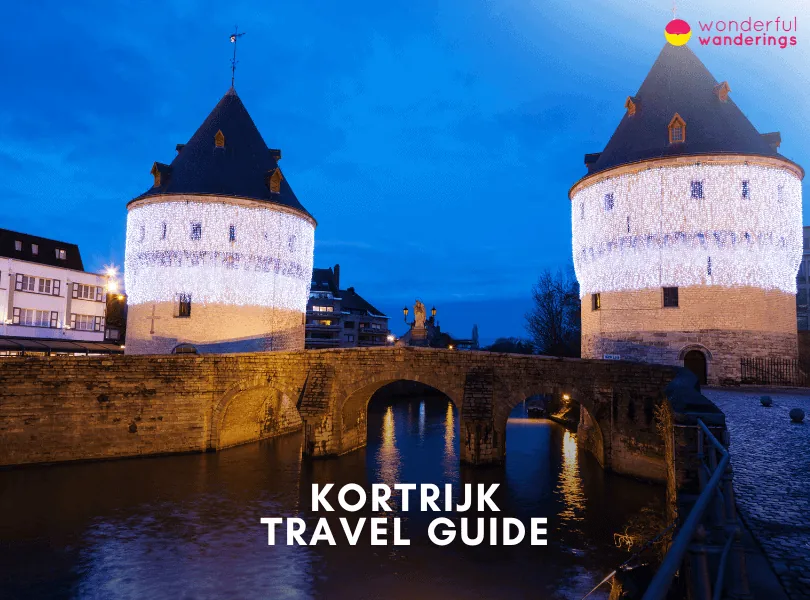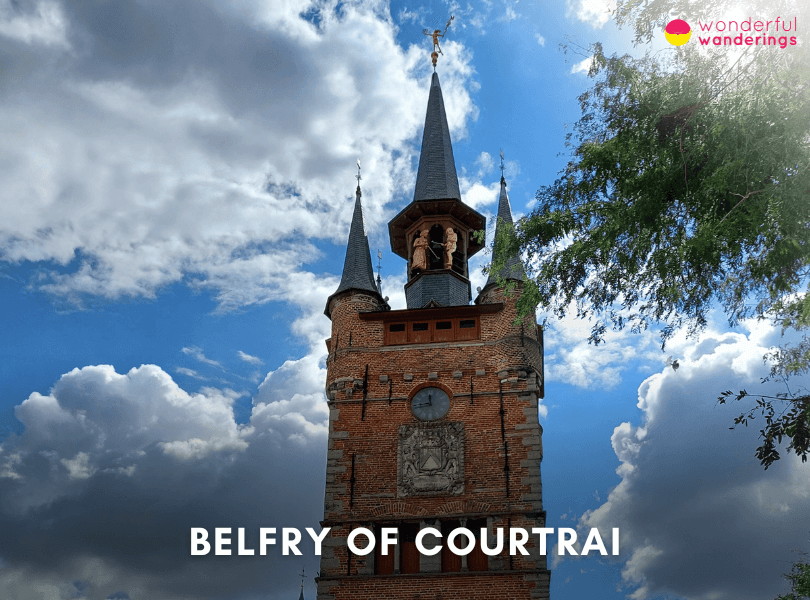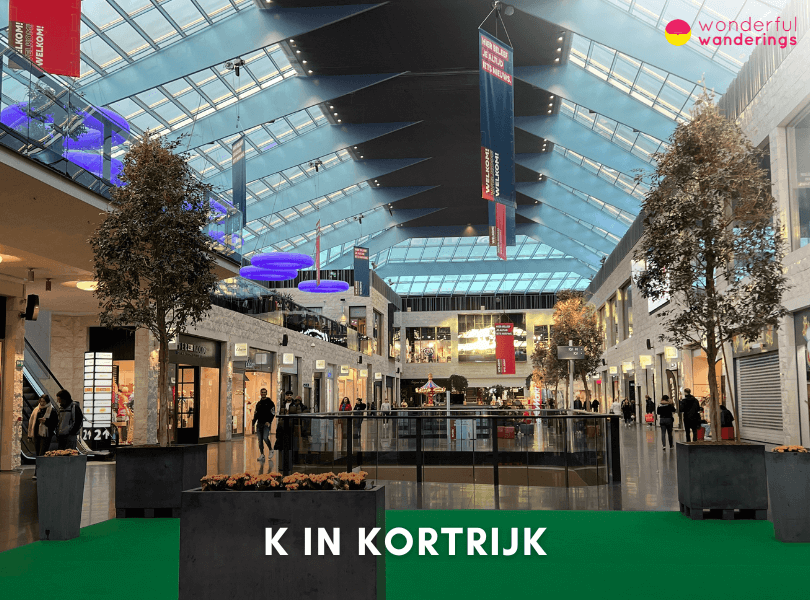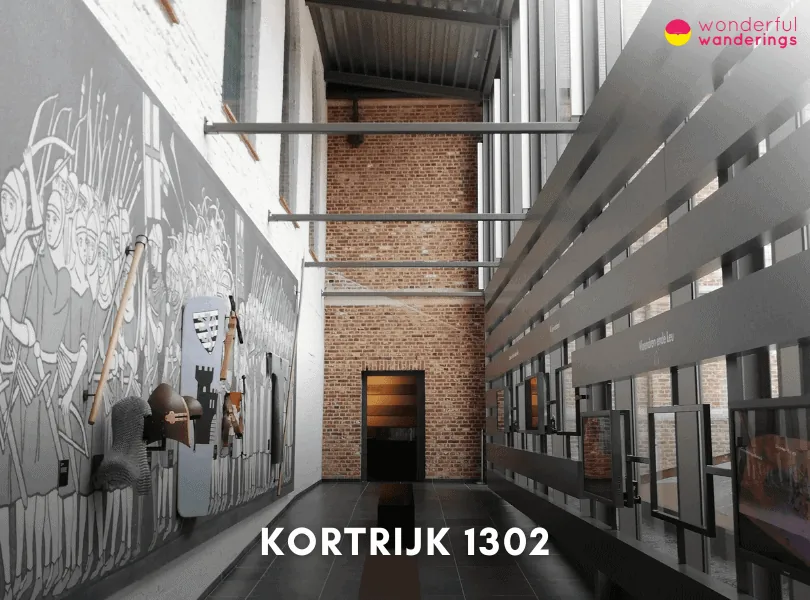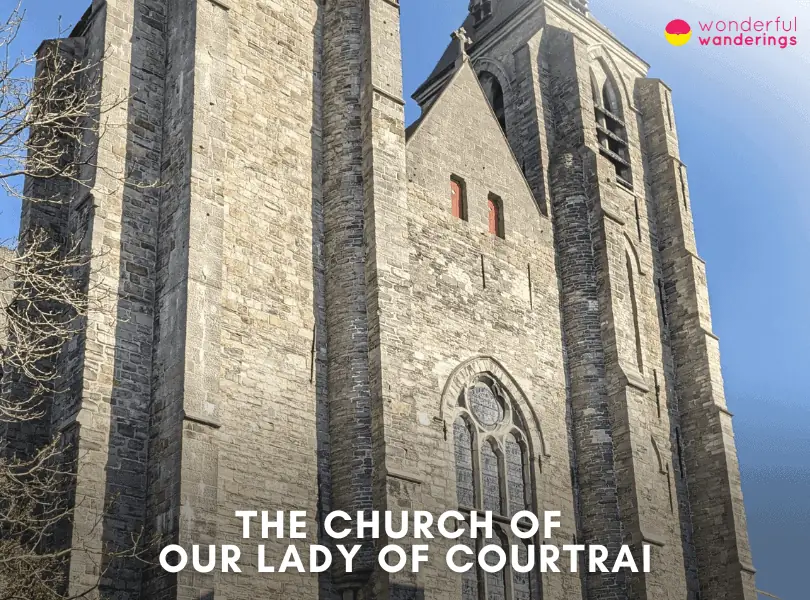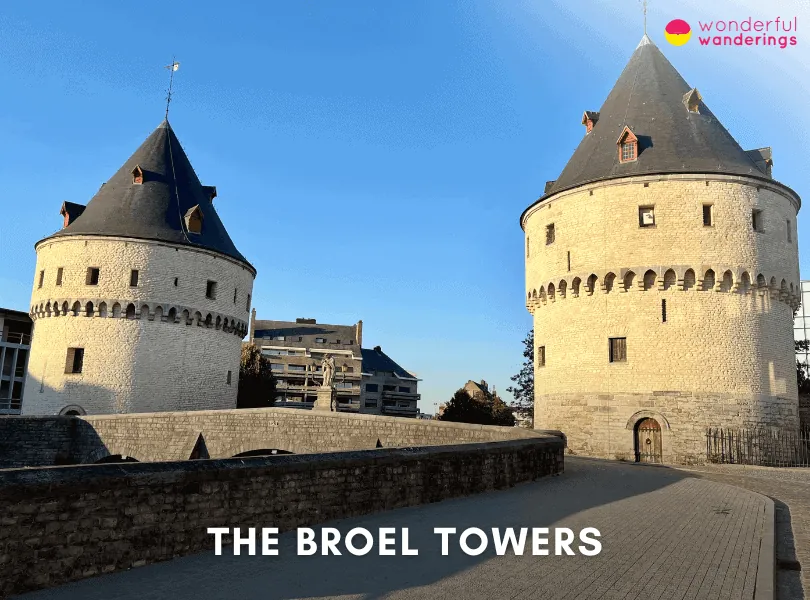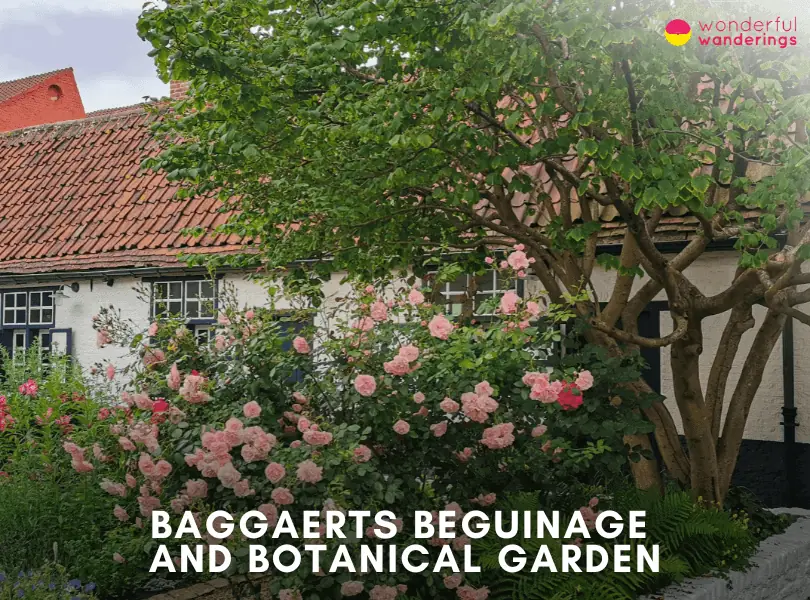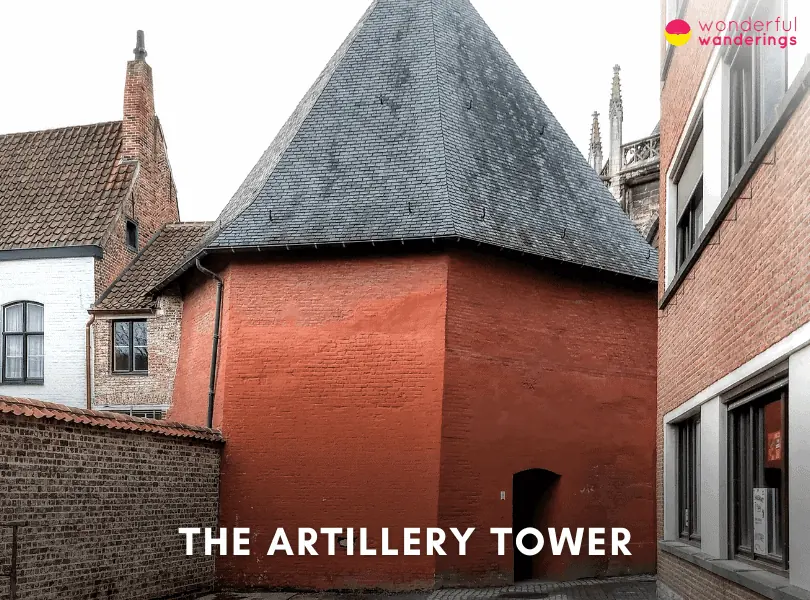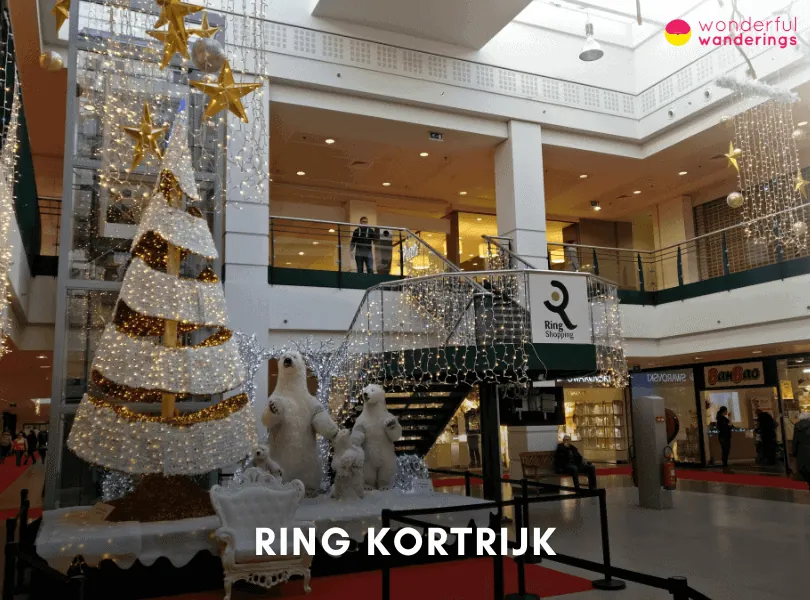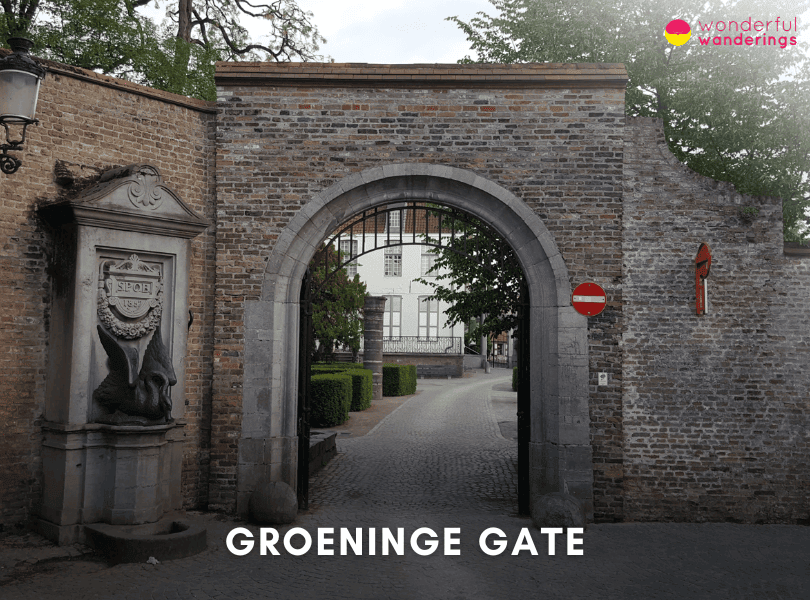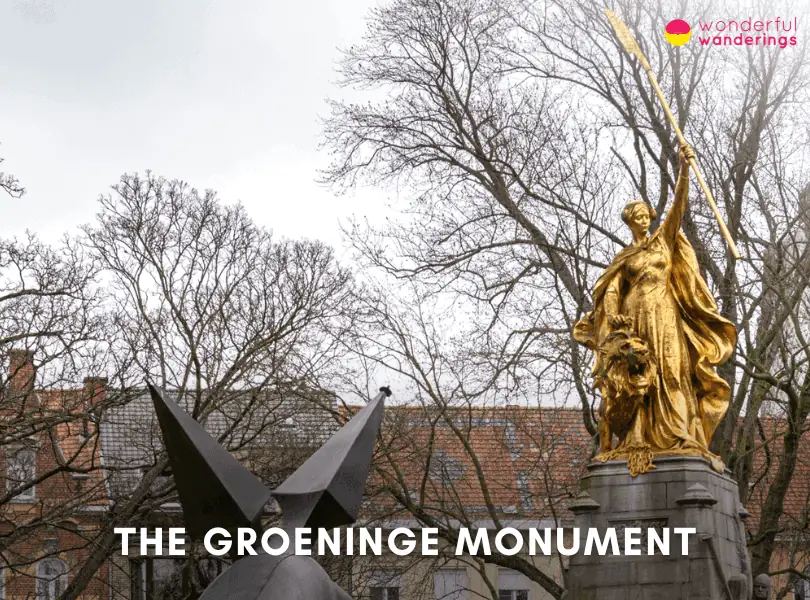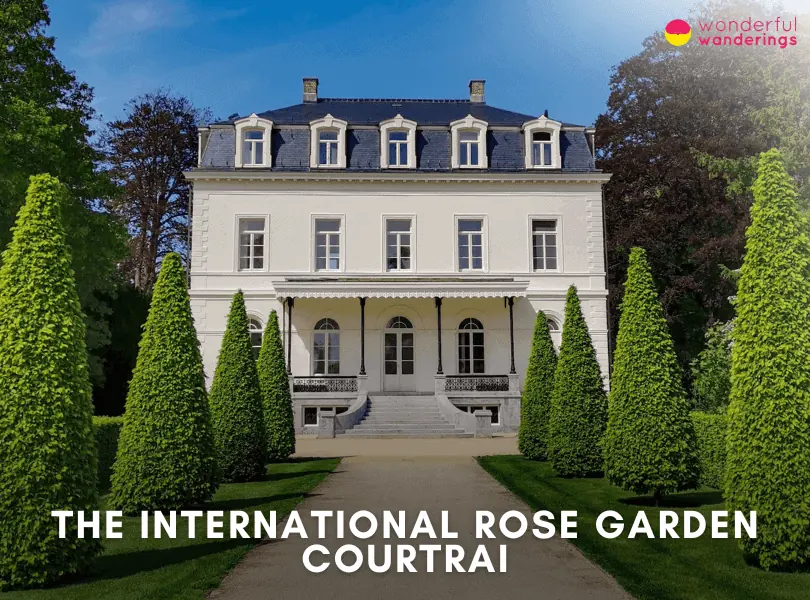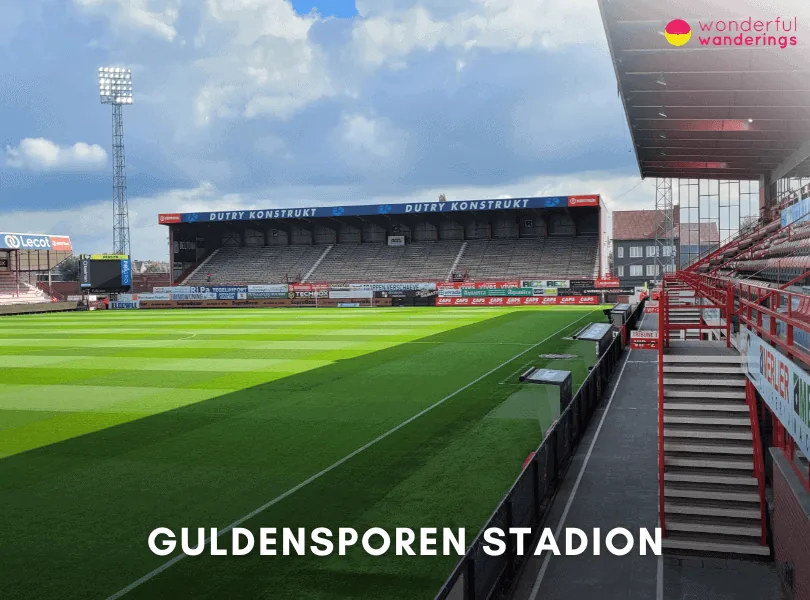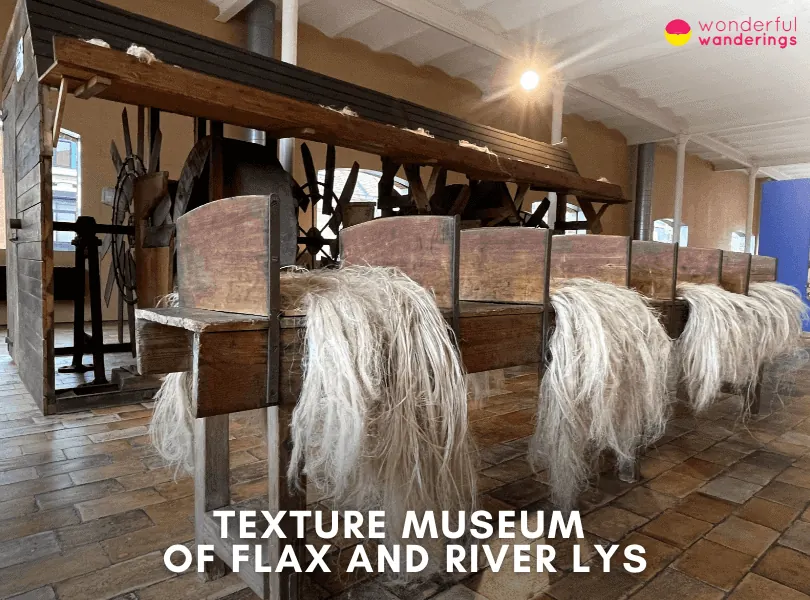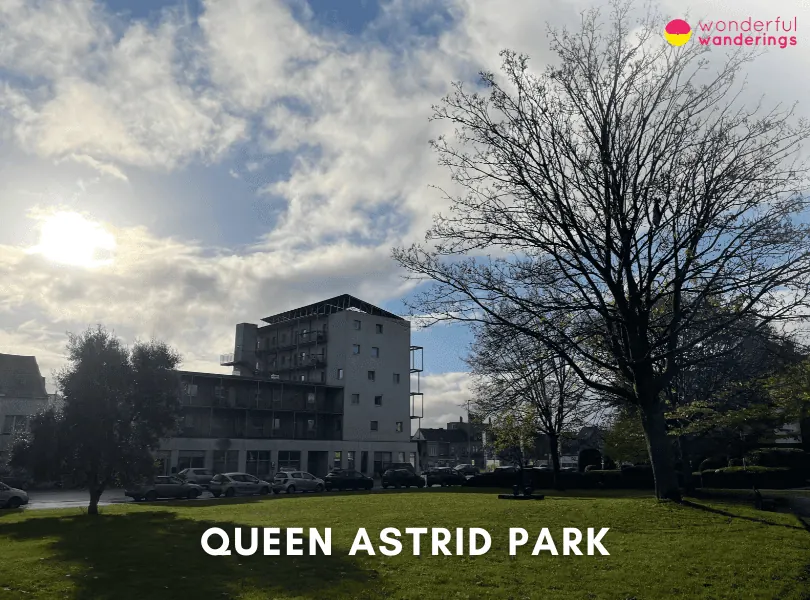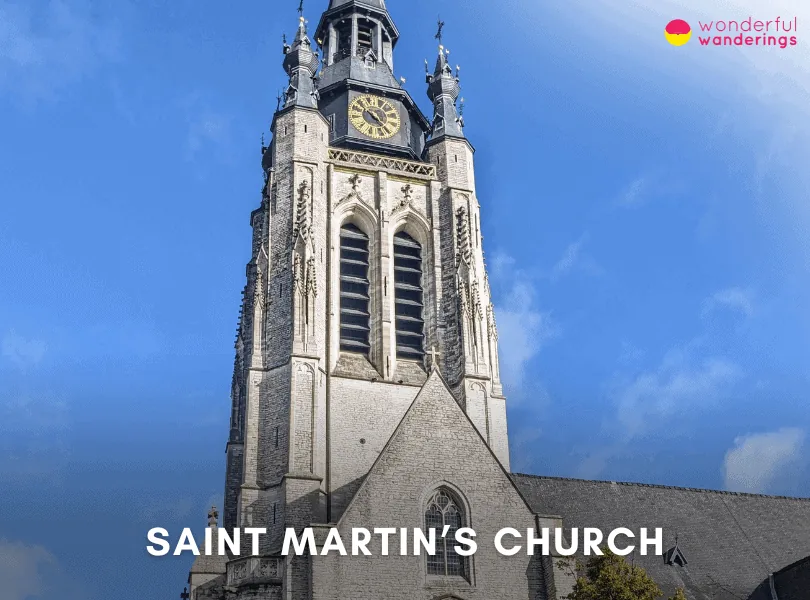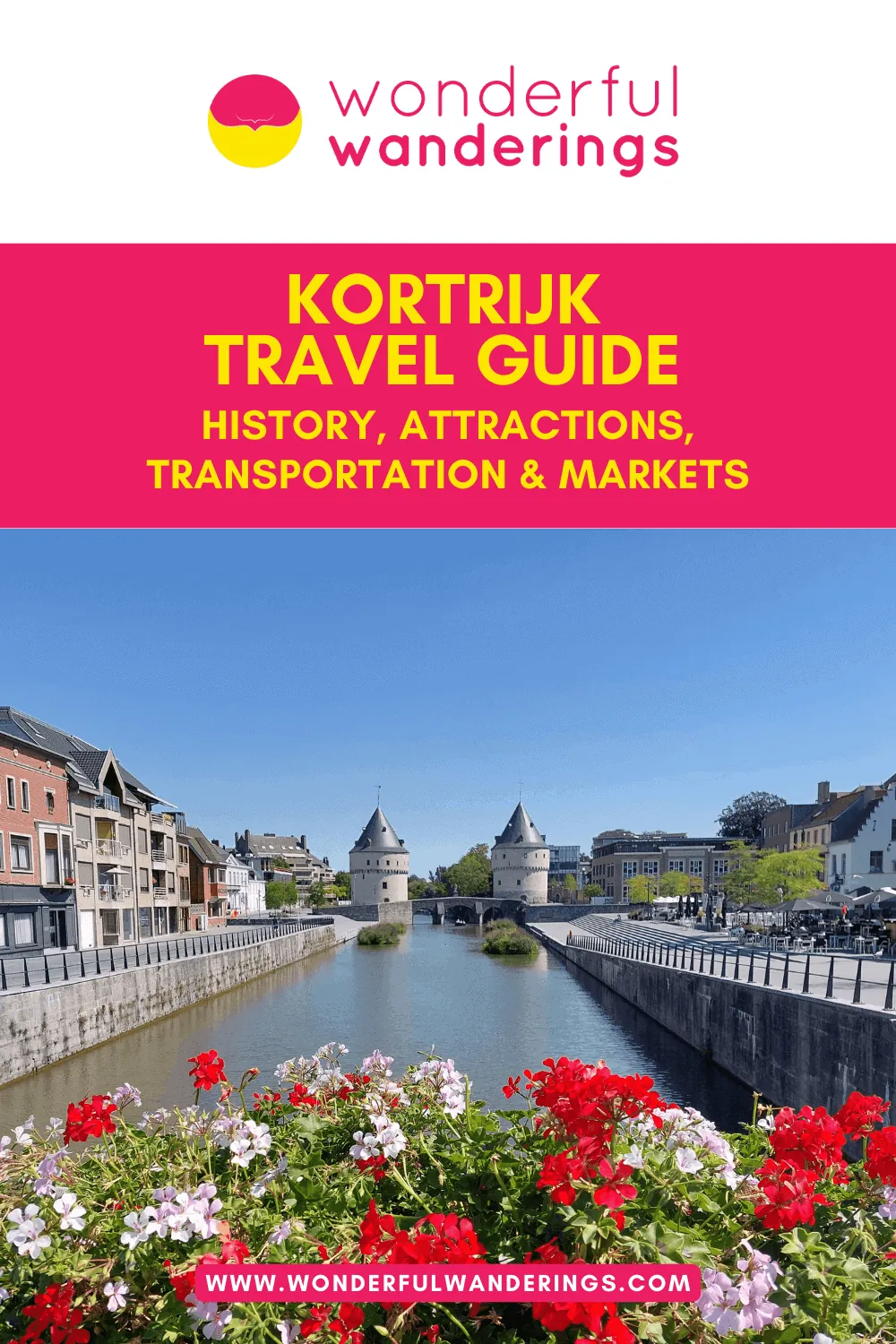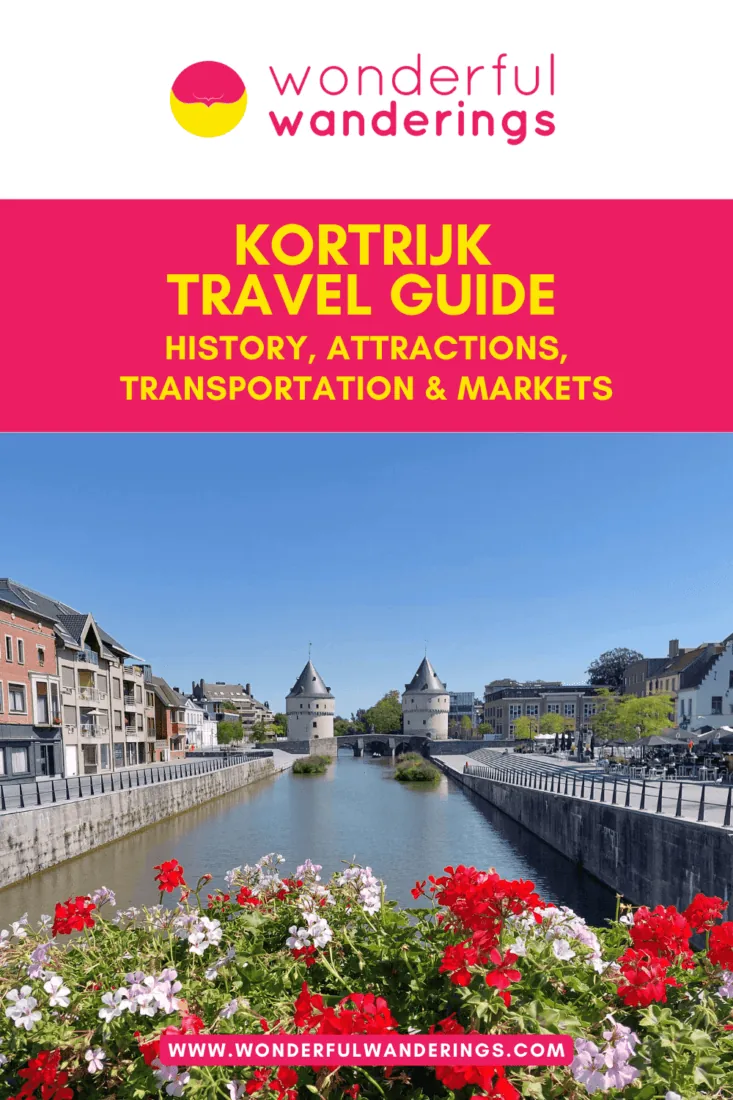Kortrijk is a city and municipality in the Flemish province of West Flanders, Belgium. In French and English, it is sometimes called Courtrai or Courtray. In Latin, it was known as Cortoriacum or Cortoracum. In West Flemish, a regional dialect of Dutch, it is called Kortryk or Kortrik. Kortrijk has a long and rich history that dates back to Roman times when it was a settlement near the river Leie and two Roman roads. It became a prosperous medieval town specializing in the linen industry and resisted the French invasions. It was the site of the famous Battle of the Golden Spurs in 1302, where the Flemish burghers defeated the French knights. It was also occupied and damaged by various foreign powers in the modern era, such as the Germans in World War I and II.
Kortrijk is located in the Central European Time Zone (CET), one hour ahead of the Coordinated Universal Time (UTC). It observes daylight saving time during the summer and switches to the Central European Summer Time (CEST), two hours ahead of UTC. Kortrijk has a temperate oceanic climate, which means that it has mild winters and cool summers, with moderate rainfall throughout the year. The average annual temperature in Kortrijk is 11.0 ℃ (51.9 ℉) and the average annual precipitation is 788 millimeters (31.0 inches). The warmest month is July, with an average temperature of 18.5 ℃ (65.2 ℉) and the coldest month is January, with an average temperature of 4.1 ℃ (39.4 ℉). The wettest month is December, with an average rainfall of 78 millimeters (3.1 inches) and the driest month is April, with an average rainfall of 54 millimeters (2.1 inches).
Listed below are the best things to do in Kortrijk.
- Belfry of Courtrai. The Belfry of Courtrai is a medieval bell tower that was part of the city’s fortifications. It is a UNESCO World Heritage Site and offers a panoramic view of the city. The belfry also displays various artifacts and documents related to the Battle of the Golden Spurs in 1302.
- K in Kortrijk. K in Kortrijk is a modern shopping mall with over 90 stores, including fashion, beauty and electronics. The mall is open from Monday to Saturday and has a parking garage and a food court. It is a place where visitors can enjoy a variety of shops, services and events.
- Kortrijk 1302. Kortrijk 1302 is a museum dedicated to the Battle of the Golden Spurs, a famous historical event in Kortrijk in 1302. The museum displays various artifacts, weapons, documents related to the battle, interactive exhibits and multimedia presentations. The museum also offers guided tours and workshops for groups.
- The Church of Our Lady of Courtrai. The Church of Our Lady of Courtrai is a former collegiate church that was built and established by Baldwin IX, Count of Flanders, in 1199. The church has a rich interior, an altarpiece by Anthony van Dyck and a main organ in Rococo style. The church also contains the Count’s chapel, which has frescoes of all the counts and governors of Flanders.
- The Broel Towers. The Broel Towers are two identical towers that gate a bridge on the river Lys. They are one of the city’s most important symbols and the last remaining parts of the medieval city wall. The towers were built at different times and served as fortification towers and an armory. They also have a statue of John of Nepomuk, the patron saint of the drowned.
- Baggaerts Beguinage and Botanical Garden. Baggaerts Beguinage and Botanical Garden is a historical site that dates back to the 17th century. It was where religious women, known as beguines, lived and worked. The beguinage consists of a small chapel, a museum and several houses that are surrounded by a botanical garden. The garden has a variety of plants, flowers and herbs used by the beguines for medicinal purposes. The beguinage and the garden are free to enter.
- The Artillery Tower. The Artillery Tower is a medieval tower that was part of the city’s fortifications. It is built in solid red brick and has a grey roof. It was a drinking water tower as part of the city fortifications. Eventually, it became the storage place for gun-power and cannons.
- Ring Kortrijk. Ring Kortrijk is a modern shopping mall with over 90 stores, including fashion, beauty and electronics. The mall is open from Monday to Saturday and has a parking garage and a food court. It is a place where visitors can enjoy a variety of shops, services and events. The mall also hosts pop-up stores like FAM Fashion, CDKN and Dressed by Ashley. The mall is easily accessible by the R8, the ring road around Kortrijk.
- Groeninge Gate. Groeninge Gate is a monument commemorating the 600th anniversary of the Battle of the Golden Spurs, a famous historical event in Kortrijk in 1302. The gate is a triumphal arch that gives access to Groeninge Park, where the battle was fought. It has the inscription 1302 – Groeningheveld.
1. Belfry of Courtrai
The Belfry of Courtrai, also known as the Cloth Hall of Courtrai, is located at Grote Markt in Kortrijk (Courtrai), Belgium. The historic bell tower stands in the heart of the city, next to the Town Hall and Saint-Martin’s Church. The Belfry was originally built in the 14th century as a watch tower and symbol of independence for the city. It also served as the center for the cloth trade that brought wealth and prestige to medieval Courtrai. Visitors appreciate the Belfry of Courtrai for its iconic architecture and cultural significance. The 83-meter tall tower is one of the few remaining belfries in Belgium and has been designated a UNESCO World Heritage Site. Visitors can climb the 257 steps inside the narrow spiral staircase to reach the top and take panoramic views of Courtrai. The impressive bells still ring out daily, marking the time. The Tower Museum brings history to life through multimedia exhibits about the tower, the city, medieval textile traditions and tower guardians. Guests also enjoy shopping at the museum shop, attending carillon concerts and dining at the café.
The Belfry’s location makes it easy to access while exploring Courtrai. Public transportation options like local buses, taxis, bikes and walking provide convenient modes for reaching the popular site. Visitors of all ages and interests appreciate a visit. The tower appeals to tourists for its architecture and views, while the museum elements attract history lovers. The UNESCO status also draws global sightseers. Those wanting exercise take on the staircase climb for rewarding scenery at the top. Admission to the Belfry of Courtrai costs 8 € ($9, £7) for adults and 6 € ($7, £5) for visitors ages 19 and under or 65 and over. Special rates apply for groups and combination tickets with the Town Hall.
2. K in Kortrijk
K in Kortrijk is a shopping and residential center in the heart of Kortrijk. It is also the largest inner-city shopping center in the province of West Flanders. It opened its doors to the public on Thursday, March 11, 2010, as part of a four-day opening event. It offers a variety of shops, services, restaurants and apartments for visitors and residents. K in Kortrijk is also known as Kortrijk Shopping Center or KSC. It is located at Steenpoort 2, Kortrijk, West Flanders, 8500. It is between the Lange Steenstraat, Steenpoort, Sint-Jansstraat, Kleine Sint-Jansstraat, Veemarkt and the Wijngaardstraat. The Sionstraat runs through the project and is partly covered. It is close to the main square of Kortrijk, the Grote Markt and the historical Broel Towers.
K in Kortrijk is special due to its architectural design and integration with the city’s urban fabric. It was designed by the famous architects Robbrecht and Daem, who aimed to create a modern and attractive space that respects Kortrijk’s historical and cultural heritage. The center features a central courtyard with a glass roof, a tower building with shops and apartments and a mix of local and international brands. It also has a large underground parking lot for 1100 cars, a bike parking for 450 bikes and an underground delivery zone for the shops. Visitors can do many things in K in Kortrijk, depending on their interests and preferences. Firstly, they can shop for fashion, leisure, interior and more at the 80 stores over 34,000 square meters. Secondly, they can enjoy a meal or drink at one of the many restaurants and cafes offering various cuisines and atmospheres. Thirdly, visitors can also relax and have fun at the events and activities organized throughout the year, such as the Black Weekend, the Christmas Market and the Sinterklaas visit. Lastly, they can also explore the nearby attractions of Kortrijk, such as the Belfry, the Beguinage and the Kortrijk 1302 Museum.
Visitors can use different transportation modes to get to K in Kortrijk. Firstly, they can take the E17 motorway by car, exit at Kortrijk-Zuid or Kortrijk-Oost and follow the signs to the center. Secondly, if by train, they can take the IC or L trains to Kortrijk Station, walk for 15 minutes or take a bus to the center. Thirdly, if by bus, they can take the lines 1, 2, 3, 4, 6, 8, 9, 12, 13 or 50 to the stops Kortrijk Veemarkt, Kortrijk Schouwburg or Kortrijk Lange Steenstraat, which are all close to the center. Lastly, if by bike, they can use the bike paths that connect the center with the rest of the city. K in Kortrijk is best for people who love shopping, dining and entertainment in a modern and convenient setting. It is suitable for all ages and budgets, offering a wide range of products and services. It is also ideal for people who want to experience the culture of Kortrijk. It is a place where visitors can find everything they need and want and have a great time with their friends and family.
The admission fee for entering K in Kortrijk is free for everyone, but visitors may have to pay for parking, depending on the duration and the time of their visit. The parking rates are 2 € ($2.28, £1.66) per hour, with a maximum of 20 € ($22.82, £16.58) per day from Monday to Saturday from 07:00 am to 07:00 pm or 0.5 € ($0.57, £0.42) per hour, with a maximum of 5 € ($5.71, £4.15) per night from Monday to Saturday from 07:00 pm to 07:00 am, while on Sunday and public holidays, it costs 0.5 € ($0.57, £0.42) per hour, with a maximum of 5 € ($5.71, £4.15) per day.
3. Kortrijk 1302
Kortrijk 1302 is a museum that tells the story of the Battle of the Golden Spurs, a historical event that took place in Kortrijk on July 11, 1302. The battle was a decisive victory for the Flemish militia over the French army and it became a symbol of Flemish identity and resistance. The museum uses multimedia and interactive exhibits to show the historical context, the course, the aftermath of the battle and the myths and legends surrounding it. The museum also explores the cultural and political significance of the battle between the Flemish movement and the Belgian state. The museum is located in the former Groeninge Abbey, a 17th-century building that was once a monastery and a hospital. The museum is also known as the Groeningemuseum or the Museum of the Battle of the Golden Spurs. It is in Groeningelaan 2, 8500 Kortrijk, Belgium. It is close to the Groeninge Monument, a memorial for the Flemish soldiers who died in the battle and the Groeninge Gate, a medieval gate that marks the entrance to the battlefield. The museum is also near the Grote Markt, the main square of Kortrijk, where visitors can see the Belfry, the City Hall and the Saint Martin’s Church.
Kortrijk 1302 is special because of its innovative and engaging way of presenting the history of the Battle of the Golden Spurs. The museum displays historical artifacts and documents and uses audiovisual and interactive techniques to recreate the battle’s atmosphere and emotions. Visitors can see realistic models of the soldiers and the weapons, hear the sounds of the battle and feel the impact of the events. The museum also challenges the visitors to question the sources and the interpretations of the history and to reflect on the meaning and the relevance of the battle for the present and the future. It also offers educational programs and activities for schools and groups and guided tours and workshops for the general public. Visitors can learn about the history of the Battle of the Golden Spurs and its consequences for Flanders and Europe in Kortrijk 1302. They can discover the myths and legends created around the battle, such as the story of the golden spurs, the lion of Flanders and the Flemish anthem. Visitors can also experience the battle from different perspectives, such as the Flemish militia, the French knights, the clergy, the women and the children. They can also interact with the exhibits and multimedia devices, such as touch screens, audio guides and virtual reality glasses. Visitors can also enjoy the park and the garden around the museum, where they can see the historical monuments and the natural scenery.
To get to Kortrijk 1302, visitors can use different modes of transportation. Firstly, they can take the E17 motorway by car, exit at Kortrijk-Centrum and follow the signs to the museum. Secondly, visitors can take the IC or L trains to Kortrijk Station and walk for 20 minutes or take a bus to the museum by train. Thirdly, if by bus, they can take the lines 1, 2, 3, 4, 6, 8, 9, 12, 13 or 50 to the stops Kortrijk Veemarkt, Kortrijk Schouwburg or Kortrijk Lange Steenstraat, which are all close to the museum. Lastly, if by bike, they can use the bike paths that connect the museum with the rest of the city. Kortrijk 1302 is best for people interested in history, culture and politics. It is suitable for all ages and backgrounds, as it offers a comprehensive and accessible overview of the Battle of the Golden Spurs and its significance. It is also ideal for people who want a fun and interactive experience, as it uses modern and creative technologies to bring history to life.
The admission cost for entering Kortrijk 1302 is 6 € ($7, £5) for adults, 4 € ($5, £3) for seniors, students and groups and free for children under 12 years old. The museum also offers a combined ticket with the Texture Museum, a museum about the history and the future of the flax and linen industry in Kortrijk, for 10 € ($12, £9) for adults, 7 € ($8, £6) for seniors, students and groups and free for children under 12 years old. The museum is open from Tuesday to Sunday, from 10:00 am to 05:00 pm. The museum is closed on Mondays and on some public holidays.
4. The Church of Our Lady of Courtrai
The Church of Our Lady of Courtrai is a former collegiate church that was built and established by Baldwin IX, Count of Flanders, in 1199. It is one of the oldest and most important churches in the city of Kortrijk, Belgium. The church has a rich history and a remarkable interior that showcases various artistic styles and treasures. The Church of Our Lady of Courtrai is also known as Onze-Lieve-Vrouwekerk, which means Our Lady’s Church in Dutch. It is dedicated to the Virgin Mary, the city’s patron saint and the church. The church has a Romanesque west facade, a Gothic nave and transept and a Baroque choir and chapels. It also has a distinctive tower that was added in the 15th century and is 83 meters high.
The Church of Our Lady of Courtrai is in the center of Kortrijk, on the Onze-Lieve-Vrouweplein (Our Lady’s Square). The full address is Deken Zegerplein 1, 8500 Kortrijk, Belgium. The church is easily accessible by public transport, as it is close to the Kortrijk train station and several bus stops. It is special as it played a major role in the history of the County of Flanders and the Battle of the Golden Spurs in 1302. After the battle, which took place nearby on the Groeningekouter, the Flemish people hung 500 golden spurs of killed French knights on the ceiling of the church. Mercenaries later stole the spurs, but replicas can still be seen in the church. The church also contains the Count’s Chapel, built by Louis II of Flanders in 1370 as a mausoleum for himself and in honor of Saint Catherine. The chapel has frescoes of all the counts and governors of Flanders, dating from the Spanish and Austrian periods.
Visitors can do many things in the Church of Our Lady of Courtrai, such as admire the architecture, the artworks and the relics that are displayed in the church. Some of the highlights include the altarpiece of Anthony van Dyck’s Raising of the Cross, which was commissioned by the canon Roger Braye in 1631, the main organ, which is sculpted in Rococo style and built by Van Peteghem and the statue of Our Lady of Flanders, which is a 14th-century wooden sculpture that the Flemish soldiers respected during the First World War. Visitors can also enjoy a free audiovisual presentation of the history of the church and the Battle of the Golden Spurs, which is available in several languages. The church is best for people interested in history, culture and art, as it offers a unique insight into the past and present of Kortrijk and Flanders. The church is also suitable for families with its children’s corner and a treasure hunt for kids. It is open daily from 10:00 am to 05:00 pm, except on Mondays and public holidays. Admission is free, but donations are welcome.
5. The Broel Towers
The Broel Towers are a pair of medieval fortification towers that stand on the banks of the river Lys in the Belgian city of Kortrijk. They are also known as the Broeltorens in Dutch, the region’s official language. The towers are listed as monuments and landmarks of the city, symbolizing its rich history and culture. The Broel Towers are located at Broelkaai 6, 8500 Kortrijk, Belgium. They are in the city’s historical center, near the Beguinage and the Church of Our Lady. The towers are connected by a stone bridge spanning the river, offering a scenic view of the water and the surrounding buildings.
The Broel Towers are the only remaining parts of the medieval city wall that once surrounded Kortrijk. The wall was built in the 12th century to protect the city from invaders and it was later destroyed by the French king Louis XIV in the 17th century. The towers were built at different times and for different purposes. The southern tower, also called the Speyetoren, was built in 1385 to control the traffic on the river. The northern tower, also called the Ingelborchtoren, was built in 1415 and was used as an armory. The towers have witnessed many historical events, such as the Battle of the Golden Spurs in 1302, the Siege of Kortrijk in 1382 and the World Wars in the 20th century.
Visitors can enjoy the Gothic architecture and the details of the Broel Towers, such as the coats of arms, the gargoyles and the statue of John of Nepomuk, the patron saint of the drowned, on the bridge. They can also learn more about the towers’ history and significance by visiting the Broel Museum housed in the southern tower. The museum displays various artifacts and exhibits related to the military and the maritime history of Kortrijk. The museum is open from Tuesday to Sunday, from 10:00 am to 05:00 pm and the admission fee is 3 € ($3.4, £2.5) for adults, 2 € ($2.3, £1.7) for students and seniors and free for children under 12 years old. Visitors can also walk along the river or relax in the nearby park, where they can enjoy nature and the atmosphere of the city.
Visitors can take various modes of transportation to get to the Broel Towers. Firstly, if by car, they can follow the E17 motorway, take exit 2-Kortrijk-Zuid and follow the signs for the city center and the Broel Towers. Secondly, if by train, they can take Line 75 from Brussels or Line 66 from Lille and get off at the Kortrijk station, where visitors can walk for 15 minutes or take the bus line 1 or 12 and get off at the Broelkaai stop. Lastly, visitors can follow the cycle route LF6, which passes through the Broel Towers and connects the cities of Antwerp and Lille by bike. The Broel Towers are best for visitors interested in the history and the culture of Kortrijk and the region of Flanders. They are also suitable for families, couples and solo travelers who want to enjoy the city’s beauty.
6. Baggaerts Beguinage and Botanical Garden
Baggaerts Beguinage and Botanical Garden is a historical and cultural attraction in Kortrijk, Belgium. It consists of two parts: the Baggaerts Beguinage and the Botanical Garden. The Baggaerts Beguinage is a former religious community of women who lived semi-monastic lives without taking formal vows. It was founded in 1238 by Elisabeth of Hungary, the daughter of King Andrew II of Hungary. The beguinage was named after Jan Baggaert, a wealthy merchant who donated land and money to the beguines. The beguinage has 41 houses, a chapel, a convent and a museum showcasing the beguines’ life and history. The Botanical Garden is a green oasis in the city center, with more than 2,000 plant species from different regions of the world. It was established in 1806 by the French botanist Jean-Baptiste Van Mons, who was also the director of the botanical garden in Leuven. The garden has a pond, a greenhouse, a rock garden and a medicinal herb garden. It also hosts various events and exhibitions throughout the year.
The Baggaerts Beguinage and Botanical Garden is also known as the Begijnhof en Kruidtuin Baggaertshof. It is one of the four beguinages in Kortrijk, along with the Saint Elisabeth Beguinage, the Saint Matthew Beguinage and the Saint Anne Beguinage. The Baggaerts Beguinage and Botanical Garden is the smallest and youngest of the four but also the most well-preserved and authentic. The Flemish government lists the beguinage and the garden as protected monuments. The beguinage is also part of the UNESCO World Heritage Site of Flemish Béguinages, which includes 13 beguinages in Flanders. The Baggaerts Beguinage and Botanical Garden is located at Sint-Jansstraat 37, 8500 Kortrijk, Belgium. It is near the city center of Kortrijk, which is a historical and cultural city in the province of West Flanders.
The Baggaerts Beguinage and Botanical Garden offers a unique insight into the history and culture of Kortrijk and Flanders. The beguinage is a rare example of a medieval women’s movement that was independent, spiritual and charitable. The beguines were not nuns but devoted themselves to prayer, work and service to the poor and the sick. They also had a rich cultural and artistic heritage, producing manuscripts, embroidery, lace and paintings. The beguinage is peaceful, with narrow streets, whitewashed houses and colorful flowers. The botanical garden is a beautiful and educational place with a diverse collection of plants that have scientific, medicinal and ornamental value. The garden is relaxing and refreshing, with a pond, a cozy greenhouse and a scenic rock garden. It also hosts events and exhibitions throughout the year, such as concerts, workshops and art shows.
Visitors can learn about the history and culture of the beguines by visiting the museum, the chapel and the convent. They can also admire the beguinage’s architecture and atmosphere, which dates back to the 17th and 18th centuries. Visitors can stroll around the botanical garden and discover the different plant species and their uses. They can also enjoy the garden’s beauty, which changes with the seasons. Visitors can also participate in the events and exhibitions that the garden organizes, such as concerts, workshops and art shows. Visitors can also explore the city center of Kortrijk, which has many other attractions, such as the Belfry, the Broel Towers, the Saint Martin’s Church and the Kortrijk 1302 Museum. Visitors can take different modes of transportation to get to the Baggaerts Beguinage and Botanical Garden. Firstly, visitors can take the E17 motorway by car, exit at Kortrijk-Zuid, then follow the signs to the city center and the beguinage. A parking lot near the beguinage costs 2 € ($2.27, £1.72) per hour. Secondly, visitors can take the train to Kortrijk Station, which is connected to major cities in Belgium, France and the Netherlands, then walk for 15 minutes or take the bus number 1, 2 or 6 to the beguinage. Lastly, visitors can use the cycling network of West Flanders, which has signposted routes that pass by the beguinage. There are bike racks near the beguinage, where visitors can park their bikes for free.
The Baggaerts Beguinage and Botanical Garden is best for visitors interested in history, culture and nature. The beguinage and the garden are rich in historical and cultural significance, as they reflect the heritage and the identity of Kortrijk and Flanders. The beguinage and the garden also appeal to visitors who love nature and beauty, as they offer a variety of plants and flowers that create a pleasant and harmonious environment. The beguinage and the garden are suitable for visitors of all ages, as they have something to offer for everyone.
7. The Artillery Tower
The Artillery Tower is a historic monument in Kortrijk, Belgium. It is also known as the Powder Tower or the Water Tower. It is located in the Begijnhofpark, near the Church of Our Lady. The tower is one of the oldest buildings in the city, dating back to the 14th century. The Artillery Tower has a long and varied history. It was originally built as a drinking water tower for the city’s fortifications. Later, it was used as a storage place for gunpowder and cannons. It was also involved in several wars and sieges, such as the Battle of the Golden Spurs in 1302 and the Siege of Kortrijk in 1382. Visitors can explore the Artillery Tower and learn more about its history and architecture. They can also enjoy the scenic views of the park and the church from the tower’s windows. The Artillery Tower is open to the public from 02:00 pm to 06:00 pm on Saturdays and Sundays. The nearest train station is Kortrijk Station, which is 1.5 kilometers (0.9 miles) from the tower. Visitors can also drive to the tower, but parking is limited in the area. The Artillery Tower is best for visitors interested in history, culture and architecture. It is suitable for all ages, but children should be accompanied by adults. The Artillery Tower is a free attraction, but donations are welcome. Visitors should also respect the tower’s rules and regulations, such as not smoking, eating or drinking inside the tower.
8. Ring Kortrijk
Ring Kortrijk is a shopping center in Kortrijk, Belgium. It is the largest covered shopping center in the province of West Flanders, with over 90 shops and restaurants for the whole family. Ring Kortrijk offers a wide range of products and services, from fashion and beauty to electronics and food. It is also known as Ring Shopping Center or Ring Shopping Kortrijk Noord. It is located at Ringlaan 34, Internal Postal Box unit 133, 8500 Kortrijk, West-Vlaanderen, Belgium. It is near the R8, the ring road around Kortrijk, which connects to the E17 and E403 motorways.
Ring Kortrijk combines convenience, comfort and quality in one place. It has 2000 free parking spaces, a service center called The Point and a modern and spacious interior. Ring Kortrijk also organizes events and activities throughout the year, such as Black Friday, Christmas and Easter. Ring Kortrijk is a popular destination for locals and visitors alike. Visitors can shop for clothes, shoes, accessories, jewelry, cosmetics, books and toys. They can also enjoy a meal or a drink at one of the cozy cafes and restaurants or relax and have fun at the cinema, the bowling alley or the arcade. Visitors can also explore the history and culture of Kortrijk at the nearby attractions, such as the Belfry, the Broel Towers and the Beguinage.
9. Groeninge Gate
Groeninge Gate is a monument in the Belgian city of Kortrijk commemorating the 600th anniversary of the Battle of the Golden Spurs, a historic victory of the Flemish militia over the French army in 1302. The gate is a triumphal arch that gives access to Groeninge Park, where the battlefield was in the Middle Ages. The gate was constructed in 1908 and has the inscription 1302 – Groeningheveld, which means 1302 – Groeninge Field. The gate is a symbol of the Flemish identity and culture and a reminder of the struggle for freedom and independence against foreign domination. The Groeninge Gate is also called the Groeningepoort in Dutch. The gate is also sometimes called the Golden Spurs Gate, after the name of the battle it celebrates. The gate is one of the landmarks of Kortrijk, along with the Groeninge Monument, a golden statue of a lion that stands in the park near the gate.
Groeninge Gate is located at Plein 25, Kortrijk, Flemish Region, 8500, Belgium. The nearby city is Bruges, 56 kilometers (35 miles) from Kortrijk. The gate is in the southeastern part of the city, near the river Leie and the Kortrijk 1302 Museum, which showcases the history and artifacts of the Battle of the Golden Spurs. The gate is easily accessible by public transport, car or bike, as it is close to the city’s main roads and train stations. Groeninge Gate honors the legacy of the Battle of the Golden Spurs, one of the most important events in the history of Flanders and Belgium. The battle was a decisive victory for the Flemish militia, composed of farmers, craftsmen and merchants, over the French army, composed of knights and nobles, in a conflict over taxes, trade and political rights. The battle is also known as the Battle of the Golden Spurs because the Flemish soldiers collected the golden spurs of the fallen French knights as trophies and hung them in a nearby church. The battle is celebrated every year on July 11 as the Flemish Community Day, a public holiday in Flanders.
Visitors can admire the architecture and the details of the gate, such as the coats of arms of the cities that participated in the battle, the statues of the Flemish heroes and the reliefs depicting scenes from the battle. They can also enter Groeninge Park, where they can enjoy the greenery, the flowers, the fountains and the views of the river Leie. Visitors can visit the Groeninge Monument, a golden lion symbolizing the Flemish people’s courage and pride. They can also explore the Kortrijk 1302 Museum, where they can learn more about the battle’s history and context, see the original golden spurs and other relics and experience the battle through interactive exhibits and multimedia.
10. The Groeninge Monument
The Groeninge Monument is a historical landmark in the Belgian city of Kortrijk. It commemorates the 600th anniversary of the Battle of the Golden Spurs, a decisive victory of the Flemish militia over the French army in 1302. The monument consists of a gilded statue and a giant spur. The gilded statue, also known as the Virgin of Flanders, symbolizes Flemish nationalism and pride. It depicts a woman holding a spear in one hand and the Flemish lion in the other, pointing toward the direction of the defeated French nobles. The statue was designed by sculptor Godfried Devreese and inaugurated in 1906. It stands on a pedestal with four bronze reliefs depicting scenes from the battle. The statue is in the Groeningepark, where the Groeninge battlefield was located during the Middle Ages. After the battle, the giant spur replicates the golden spurs collected from the fallen French knights. The spurs were considered as trophies and symbols of the Flemish victory. The spur was put together in 1976, 70 years after the statue, to mark the 674th anniversary of the battle. It is located near the Groeningegate, a triumphal arch that gives access to the park.
Visitors can admire the Groeninge Monument and learn more about the history and significance of the Battle of the Golden Spurs. The battle is regarded as one of the most important events in the history of Flanders and Belgium, as it demonstrated the courage and resilience of the Flemish people against the oppression and domination of the French monarchy. The battle is also celebrated as a national holiday on July 11th, known as the Day of the Flemish Community. To get to the Groeninge Monument, visitors can take a bus, a train or a car to Kortrijk, a city in the province of West Flanders. The monument is located in the Groeningepark, which is 2 kilometers (1.2 miles) from the city center. The park is open to the public and free of charge. The nearest bus stop is Groeningelaan, which is a 5-minute walk from the park. The nearest train station is Kortrijk, which is a 25-minute walk or a 10-minute bus ride from the park.
The Groeninge Monument is best for visitors who are interested in the history and culture of Flanders and Belgium. It is a place where visitors can appreciate the artistic and architectural beauty of the monument and the historical and political significance of the battle. It is also a place where visitors can enjoy the park’s natural scenery. The Groeninge Monument is suitable for all ages and backgrounds, as it offers a glimpse into the past and the present of the Flemish identity and spirit. The admission fee for entering the Groeninge Monument is free, as it is part of the public park. However, visitors may pay transportation and parking fees to get to the park. The bus fare is 3 € ($3.5, £2.5) for a single ticket or 6 € ($7, £5) for a day pass. The train fare varies depending on the departure and arrival stations, but it is usually 10 € ($12, £8.5) for a one-way ticket or 16 € ($19, £13.5) for a round trip. The parking fee is 1.5 € ($1.8, £1.3) per hour or 10 € ($12, £8.5) per day.
11. The International Rose Garden Courtrai
The International Rose Garden Courtrai is a beautiful park that showcases more than 200 varieties of roses from different countries and regions. It is located near the Castle ‘t Hooghe, a historic building that dates back to the 14th century. The rose garden was established in 1959 and has been renovated several times to improve its design and quality. It is one of the most popular attractions in Kortrijk, a city in the province of West Flanders in Belgium. The International Rose Garden Courtrai is also known as the Rozentuin Kortrijk or the Roseraie Internationale de Courtrai. It covers an area of 1 hectare and is divided into three sections: the demonstration, test and historic. Each section has a different theme and purpose and displays roses of various colors, shapes and sizes. The rose garden is open to the public from May to October and is free of charge.
The International Rose Garden Courtrai is a special place for rose lovers and garden experts. It offers a unique opportunity to explore the beauty and diversity of roses from around the world. It also serves as a research and education center for rose cultivation and preservation. The rose garden hosts an annual competition for the best new rose, which attracts many international rose breeders and experts. The winners of the competition are awarded the Golden Rose of Kortrijk, a prestigious prize in the rose industry. The International Rose Garden Courtrai is a great place to visit for anyone who enjoys nature and flowers. Visitors can stroll along the paths, witness the roses in bloom, smell their fragrance and learn about their history and characteristics. Visitors can also relax on the benches and enjoy the peaceful atmosphere of the park. The rose garden is suitable for all ages and interests and is especially popular among families, couples and groups. It is also popular for weddings, photo shoots and events.
The International Rose Garden Courtrai is easy to reach by car, bus or bike. It is located at Doorniksesteenweg 218, 8500 Kortrijk, Belgium. It is 3 kilometers (1.9 miles) from the city center of Kortrijk and 90 kilometers (56 miles) from Brussels, the capital of Belgium. There is a parking lot near the entrance of the rose garden and a bus stop nearby. The rose garden is also accessible by bike, as the area has many bike paths and routes. The rose garden is open from 10:00 am to 08:00 pm every day except on Mondays.
12. Guldensporen Stadion
Guldensporen Stadion is a multi-purpose stadium in Kortrijk, Belgium. It is the home of K.V. Kortrijk, a football club playing in the Belgian Pro League. The stadium has a capacity of 9,399 seats, of which 5,749 are covered. The stadium was built in 1947 and has undergone several renovations. The name Guldensporen Stadion means “Stadium of the Golden Spurs”, a reference to the medieval Battle of the Golden Spurs, fought in Kortrijk in 1302. The stadium is also known as Guldensporenstadion, which is the Dutch spelling of the name. It is located southwest of Kortrijk, between the Meensesteenweg and the Moorseelsestraat. The address is Meensesteenweg 84A, 8500 Kortrijk, Belgium.
Guldensporen Stadion is the only stadium in Belgium that has hosted an international match between two A-teams. On 25 March 2022, South Africa played against Guinea in a friendly match at the Guldensporen Stadion, which ended in a 1-1 draw. The stadium is also the venue for local events, such as concerts and festivals. Visitors can enjoy watching football matches at the Guldensporen Stadion, especially when K.V. Kortrijk plays against other Belgian or European teams. The stadium has a good atmosphere and a loyal fan base. Visitors can also visit the themacafé De Kouter, which is a café and museum dedicated to the history and culture of Kortrijk and its football club. The café is located next to the stadium and is open on match days and by appointment.
Visitors can take various modes of transportation to get to the Guldensporen Stadion. Firstly, visitors can take the E17 motorway by car, exit at Kortrijk-Zuid, then follow the signs to the stadium. There is a parking lot near the stadium, but it is often full on match days. Secondly, visitors can take the train line 75 from Brussels and get off at Kortrijk station, where they can take the bus 12 or 13 to the stadium. Lastly, visitors can fly to Brussels Airport and then take the train or the bus to Kortrijk. The Guldensporen Stadion is best for football and sports fans who want to experience Belgian football culture and support the local team. The stadium is also suitable for families and groups who want to have a fun and exciting day out. The stadium is not very big but has a cozy and friendly vibe. The stadium is also accessible for people with disabilities and has special facilities for them.
The admission cost of entering the Guldensporen Stadion depends on the match type and seat category. For regular matches, the prices range from 10 € ($11, £8) to 25 € ($28, £20) for adults and from 5 € ($6, £4) to 15 € ($17, £12) for children under 16. The prices for special matches, such as cup finals or European games, may vary. Visitors can buy tickets online or at the ticket office at the stadium.
13. Texture Museum of Flax and River Lys
The Texture Museum of Flax and River Lys is dedicated to the history, production and uses of flax, a plant cultivated for thousands of years for its fibers and seeds. The museum is located in Kortrijk, a city south of West Flanders, Belgium, where the flax industry was the most important economic activity for centuries. The museum showcases the revolutionary development induced by the flax industry in this region and the stories of the present and future of flax and textiles. The museum is also known as Texture, Museum of Flax and Textiles. It is located in an authentic flax distribution center from 1912, on the banks of the river Lys, a vital waterway for the transport and processing of flax. The building has been renovated and transformed into a modern and interactive museum, where visitors can explore the three main themes of the museum: the wonder room, the leasure room and the treasure room. Each room offers a different perspective and experience of flax and textiles, from the artistic and cultural aspects to the scientific and technological innovations.
The Texture Museum of Flax and River Lys offers a variety of activities and exhibitions for visitors of all ages and interests. Visitors can learn about the history and evolution of flax and textiles, from ancient times to the contemporary world, through multimedia displays, historical objects, artworks and stories. Visitors can also touch and feel the different textures and qualities of flax and textiles and discover how they are used in various fields and sectors, such as fashion, design, architecture, health and ecology. Visitors can also participate in workshops, guided tours, lectures and events where they can create flax and textile products or learn more from the experts. The Texture Museum of Flax and River Lys is easily accessible by public transport or car. The museum is located at Noordstraat 28, 8500 Kortrijk, Belgium. The nearest city is Lille, France, which is 35 kilometers (22 miles) from Kortrijk. Visitors can take the train from Lille to Kortrijk, which takes 30 minutes or the bus, which takes an hour. Visitors can also drive from Lille to Kortrijk, which takes 40 minutes, via the A22 and E17 motorways. The museum has a parking lot for visitors and bicycle racks. It is open from Tuesday to Sunday, from 10:00 am to 05:00 pm. The museum is closed on Mondays and public holidays.
The Texture Museum of Flax and River Lys is suitable for a wide range of audiences, from children to adults, from families to groups, from students to professionals and from locals to tourists. The museum is designed to appeal to different senses and interests and to inspire curiosity and creativity. It is also a place to learn about flax and textiles’ past, present and future and appreciate the cultural and economic significance of this plant and its products. The Texture Museum of Flax and River Lys is also a place to enjoy the beauty and diversity of flax and textiles and discover how they can contribute to a more sustainable and innovative world. The admission cost of entering the museum varies depending on the age and type of visitor. The standard ticket price is 6 € ($7, £5), the reduced price for seniors, students and groups is 4 € ($5, £3) and the free admission is for children under 12, teachers, guides and press. It also offers a family ticket for 12 € ($14, £10), which includes two adults and two children. The Texture Museum of Flax and River Lys also has a pass, which allows unlimited access to the museum and other participating museums for a year, for 59 € ($69, £50). It also has a gift shop where visitors can buy flax and textile products, books and souvenirs.
14. Queen Astrid Park
Queen Astrid Park is a public park in the city of Kortrijk, Belgium. It is named after Queen Astrid of Belgium, who visited the city in 1935. The park covers an area of 4 hectares and has various features, such as a French garden, a pond, a playground, a mini-golf course and a monument dedicated to a former mayor of Kortrijk. The park is popular for locals and tourists to relax, enjoy nature and have fun. Queen Astrid Park is also known as Astridpark or Parc Astrid in French. It is in the Graaf de Smet de Naeyerlaan, a boulevard with many historic houses from the 19th century. The park is close to the city center and the main attractions of Kortrijk, such as the Texture Museum, the Beguinage and the Broel Towers. It is easily accessible by public transport, bike or car.
Queen Astrid Park is one of Kortrijk’s oldest and most beautiful parks. It was designed by the city architect Victor Moulart in 1906 and has a symmetrical layout with a central axis and geometric shapes. The park has a rich history and cultural heritage, as it witnessed many events and celebrations in the city. It also hosts various activities and events throughout the year, such as concerts, festivals, markets and exhibitions. Visitors can admire the park’s flowers, trees and sculptures or feed the ducks and swans in the pond. They can play with their children in the playground or challenge their friends in the mini-golf course. Visitors can also learn more about the history and culture of Kortrijk by visiting the monument of August Reynaert, the mayor who modernized the city in the late 19th century. The park is suitable for all ages and interests and offers a pleasant and peaceful atmosphere.
15. Saint Martin’s Church
Saint Martin’s Church is a historic and religious landmark in the city of Kortrijk, Belgium. It is one of the main attractions and one of the region’s finest examples of Gothic architecture. The church is dedicated to Saint Martin of Tours, a fourth-century bishop known for compassion and generosity. Saint Martin’s Church is also known as Sint-Maartenskerk in Dutch, which is the official language of the Flemish Region where Kortrijk is located. The church has a long and turbulent history, dating back to the 14th century. It was destroyed and rebuilt several times, most notably after a fire in 1862 that damaged the roof, the tower and many artworks. The church was restored in the 19th and 20th centuries, preserving some original elements and adding new features.
Saint Martin’s Church is located at Sint-Maartenskerkhof 8, 8500 Kortrijk, Belgium. It is on the city’s central square, called the Grote Markt, which is surrounded by other historic buildings and monuments. The church is easily accessible by public transport, as it is close to the main train station and several bus stops. It is also within walking distance from attractions like the Belfry, the Broel Towers and the Beguinage. Saint Martin’s Church has impressive architecture and a rich collection of artworks. The church has an 83-meter-high tower, which offers a panoramic view of the city and the surrounding countryside. The tower also houses a carillon of 49 bells, which plays melodies every hour. The church has a nave, a choir and several chapels, each with its own style and decoration. It contains many paintings, sculptures, stained glass windows and altarpieces, some of which date back to the 16th century. The most notable artworks are the Triptych of the Holy Spirit by Bernard de Rijckere and the Sacrament Tower, a 6.5-meter-high wooden structure representing the Eucharist.
Visitors can appreciate the architecture and the artworks, learn about the city’s history and culture and enjoy the peaceful atmosphere and the music of the carillon at Saint Martin’s Church. They can also climb the tower and see the city from a different perspective or watch the peregrine falcons that nest in the tower. It also hosts concerts, exhibitions and other events throughout the year. The church is open to the public daily from 10:00 am to 05:00 pm, except on some holidays and during maintenance work. The admission fee for entering the church is free, but there is a fee of 3 € ($3.4, £2.5) for climbing the tower. The church is suitable for all kinds of audiences, as it offers something for everyone. The church is especially popular among history buffs, art lovers and religious pilgrims.
What are the best museums to visit in Kortrijk?
Listed below are the best museums to visit in Kortrijk.
- Texture Museum of Flax and River Lys. The Texture Museum of Flax and River Lys is a museum dedicated to the history, production and uses of flax, a plant that has been cultivated for thousands of years for its fibers and seeds. The museum is located in Kortrijk, a city south of West Flanders, Belgium, where the flax industry was the most important economic activity for centuries. The museum is housed in a former flax distribution center from 1912 on the banks of the river Lys, which was used to transport flax and textiles to and from the region. The Texture Museum of Flax and River Lys showcases the revolutionary development induced by the flax industry in this region, from the cultivation and processing of the plant to the weaving and trading of the fabrics to the innovative and creative applications of flax in various domains. The museum has three rooms, each with a different theme and approach: the Wonder Room, the Leie Room and the Treasure Room. Visitors can learn about the ten highlights of the museum, such as the flax automaton, the damask tablecloth and the golden flax award, through interactive displays and audio guides. Visitors can explore Flax’s contemporary and artistic aspects, such as fashion, design and architecture, through temporary exhibitions and events. The museum also has a shop where visitors can buy flax products and souvenirs. The admission cost of entering the Texture Museum of Flax and River Lys is 6 € ($7, £5) for adults, 4 € ($5, £3) for students and seniors and free for children under 12 years old. The museum also offers discounts for groups, families and schools. It is closed on Mondays and open from Tuesday to Sunday, from 10:00 am to 05:00 pm, except on public holidays. The museum is accessible by public transport, car or bike. It is 2 kilometers (1.2 miles) from the Kortrijk train station and 100 meters (328 feet) from the nearest bus stop. A parking lot near the museum costs 1.5 € ($2, £1) per hour. The museum also has a bike parking area.
- Kortrijk 1302. Kortrijk 1302 is a museum that tells the story of the Battle of the Golden Spurs, a historical event that took place in Kortrijk, Belgium, on July 11, 1302. The battle was a decisive victory for the Flemish militia over the French army and it became a symbol of Flemish identity and resistance. The museum uses multimedia and interactive exhibits to show the battle’s political, social and cultural context and the myths and legends surrounding it. Visitors can learn about the causes and consequences of the conflict, the weapons and tactics used by both sides and the role of the guilds and the towns in the Flemish uprising. The museum also displays the original golden spurs taken from the fallen French knights and gave the battle its name. Kortrijk 1302 is located in the Groeninge Abbey, a former monastery that dates back to the 13th century. The abbey is in Begijnhof Park, a green oasis in the city center of Kortrijk. The park also contains the Groeninge Monument, a memorial to the Flemish heroes of the battle and the Groeninge Gate, a medieval gate that marks the entrance to the battlefield. The museum is 2 kilometers (1.2 miles) from the Kortrijk train station and it can be reached by bus, bike or foot. It is open from Tuesday to Sunday, from 10:00 am to 05:00 pm. The admission fee is 6 € ($7, £5) for adults, 4 € ($4.6, £3.3) for students and seniors and free for children under 12.
- Beguinage of Courtrai. Beguinage of Courtrai is a historical site and museum in Kortrijk, Belgium. It is a former community of religious women who lived together in a secluded area. The beguinage dates back to the 13th century and consists of 40 houses, a chapel, an infirmary and a visitor center. It is a UNESCO World Heritage Site and a protected area. Visitors can explore the beguinage and learn about the history and culture of the beguines, who were unmarried or widowed women who devoted themselves to God and charity. The visitor center and the experience room offer information and audio guides in English and Dutch. Visitors can also see the Kijkwoning, a restored house that shows how the beguines lived in the 17th century. The beguinage is one of the oldest and best-preserved examples of a court beguinage in the Low Countries. It is also where the world’s last beguine, Marcella Pattyn, died in 2005. The admission fee for entering the Beguinage of Courtrai is free. However, visitors must pay 2 € ($2.28, £1.72) for the audio guide. The beguinage is open every day except Monday from 10:00 am to 05:00 pm. The experience center is closed on public holidays.
- Abby Kortrijk. Abby Kortrijk is a new and unique exhibition site for visual art that will open in Kortrijk, Belgium, in the fall of 2024. It is a playful, accessible and multivoiced museum that will showcase the city’s art collection in dialogue with contemporary art, dynamic heritage practices and the theme of identity in all its complexity and diversity. Abby Kortrijk will explore what defines and connects us as humans across borders, generations and cultures, using art as a universal language. It will celebrate human curiosity and creativity and offer space for reflection, encounter, co-creation and transformation. Abby Kortrijk is located in the historic abbey site of Groeninge, which will be renovated and expanded by the famous architects Barozzi Veiga and Tab Architects in collaboration with Koplamp Architecten. A new park pavilion, which will be monumental and elegant, will serve as a magnet for the city and for visitors from far and wide. The biggest surprise will be underground, where two state-of-the-art exhibition halls will provide 600 square meters of space. Abby Kortrijk will not have a fixed layout but will surprise with striking temporary exhibitions and innovative collection presentations in spaces that will change periodically in appearance and content. Abby Kortrijk will also be an open house where people can drink and be fed with stimulating exhibitions, fascinating debates and inspiring workshops. The admission cost of entering Abby Kortrijk has not yet been announced.
- Vierstraete-dewilde Ingrid. Vierstraete-dewilde Ingrid is a museum that displays the works of Ingrid Vierstraete-dewilde, a Belgian artist specializing in abstract paintings and sculptures. She uses lively colors, geometric shapes and organic forms to create compositions that reflect her emotions, thoughts and experiences. Her artworks are influenced by various artistic movements, such as cubism, expressionism, surrealism and her personal and cultural background. Vierstraete-dewilde Ingrid is a museum that aims to inspire and challenge visitors with its diverse and dynamic collection of contemporary art. Vierstraete-dewilde Ingrid is located in Kortrijk, a city in the Flemish region of Belgium. The museum is in the historic abbey site of Groeninge, which is also home to Abby Kortrijk, another new and unique exhibition site for visual art. The museum’s address is Ter Duinenstraat 11, 8510 Marke, Belgium. The museum is easily accessible by public transport, as it is close to the Kortrijk train station and several bus stops. It is also near the city center, where visitors can enjoy Kortrijk’s cultural and historical attractions, such as the Belfry, the Broel Towers and the Beguinage. Vierstraete-dewilde Ingrid is not only a museum but also a studio and a residence for the artist. Visitors can see the artist at work, interact with her and learn more about her creative process and vision. The museum also offers workshops, lectures and guided tours for different audiences, such as schools, families and groups. It is open from Tuesday to Sunday, from 10:00 am to 06:00 pm. The admission cost of entering Vierstraete-dewilde Ingrid is 10 € ($11.5, £8.3) for adults, 8 € ($9.2, £6.6) for students and seniors and free for children under 12. The museum also has a café and a shop, where visitors can relax and buy souvenirs.
What are the best activities with kids in Kortrijk?
Listed below are the best activities with kids in Kortrijk:
- The Broel Towers. The Broel Towers are two medieval towers that stand on the banks of the river Lys. They are connected by a stone bridge and offer a great view of the city. Kids can learn about the history of Kortrijk and its defense against invaders. The towers are also close to other attractions like the Beguinage and the Belfry.
- Texture Museum of Flax and River Lys. Texture Museum of Flax and River Lys is a museum that showcases the flax and linen industry that made Kortrijk famous. Kids can discover the different uses of flax, from clothing to paper and interact with various exhibits and activities. The museum is housed in a former flax warehouse that has been renovated into a modern space.
- The International Rose Garden Courtrai. The International Rose Garden Courtrai is a beautiful garden that features more than 300 varieties of roses from around the world. Kids can enjoy the colors and fragrances of the flowers and learn about their names and origins. The garden is also a relaxing place to picnic or walk.
- Ring Kortrijk. Ring Kortrijk is a large shopping mall that offers a variety of shops, restaurants and entertainment options for the whole family. Kids can find their favorite toys, clothes and books or have fun at the indoor playground, the cinema or the bowling alley. The mall also has free parking and is easily accessible by public transport.
- De Warande. De Warande is a park with many facilities for kids to play and exercise. Playgrounds, sports fields, a skate park, a mini golf course and a petting zoo exist. The park also hosts events and festivals throughout the year, such as the Easter egg hunt, the Halloween party and the Christmas market.
What are the best activities for a business traveler in Kortrijk?
Listed below are the best activities for a business traveler in Kortrijk.
- Brewery Tour. A visit to the Brouwerij Omer Vander Ghinste is a great way to learn about the history and process of beer making in Belgium. The tour guide will explain the family tradition and the different types of beers they produce, such as the famous Omer blonde ale. For business travelers, it provides an excellent overview of Kortrijk’s rich past and the industries that contributed to its growth. The tour also includes two tastings and a gift at the end. It lasts 90 minutes and costs 10 € ($11.5, £8.3) per person.
- Beguinage. The Begijnhof St Elisabeth is a UNESCO World Heritage site that dates back to the 13th century. It was where religious women, known as beguines, lived and worked. The beguinage consists of a small chapel, a museum and several houses that are still inhabited today. The beguinage is free to enter and offers a quiet and peaceful atmosphere within the city center. There is also a café-restaurant, Huyze Begga, where those in business travel can enjoy a drink or a meal.
- Museum. The Kortrijk 1302 museum is dedicated to the Battle of the Golden Spurs, a famous historical event that took place in Kortrijk in 1302. The museum displays various artifacts, weapons, documents related to the battle and interactive exhibits and multimedia presentations. The museum also offers guided tours and workshops for groups. It is open from Tuesday to Sunday and costs 6 € ($6.9, £5) per person.
- Buda Island. The Buda Island is a creative and cultural hub in the middle of the river Lys. It hosts various events, exhibitions, performances throughout the year, a cinema, a library and a café. The island is also home to the Budatoren, a tower that offers a panoramic view of the city. The island is accessible by several bridges and is a nice place for business travelers to relax and enjoy the artistic vibe of Kortrijk.
- Shopping. Kortrijk is a great destination for shopping lovers, as it offers a variety of shops, boutiques and markets. The main shopping area is the K in Kortrijk, a modern shopping mall with over 90 stores, including fashion, beauty and electronics. The mall is open from Monday to Saturday and has a parking garage and a food court. For more local and unique products, business travelers can also check out the weekly market that takes place every Monday morning at the Grote Markt. The market sells fresh produce, flowers, cheese and more.
Where is Kortrijk?
Kortrijk, also known as Courtrai in French, is a city and municipality in the Flemish province of West Flanders, Belgium. It is located on the Leie River, 42 kilometers southwest of Ghent and 25 kilometers northeast of Lille, France. It is the capital and largest city of Kortrijk’s judicial and administrative arrondissement. Kortrijk has a population of 78,000 people (2023). The distance between Kortrijk and Brussels, the capital of Belgium, is 76 kilometers (47 miles) by road and it takes one hour to drive or to travel by train. The coordinates of Kortrijk are 50°49′39″N 03°15′57″E.
What is the history of Kortrijk?
Kortrijk is a Belgian city that originated from a Gallo-Roman town called Cortoriacum, located at a crossroads near the Leie River and two Roman roads. The Romans used the town as an encampment during their invasion of Britain in AD 43. The name Cortoriacum later evolved to Cortrycke, Cortryck and Kortrijk. In French and in English, the city is also known as Courtrai. Kortrijk reached its peak in the Middle Ages as a center of the linen damask industry, trading with France and England. The city was chartered in 1190 and became one of the biggest and richest cities in Flanders. In 1297, the French invaded the town and most of Flanders. In 1302, the burghers and weavers of Flanders defeated a powerful cavalry of French knights on the Fields of Groeninge near Kortrijk in a battle known as the Battle of the Golden Spurs. The city is often referred to as the City of Groeninge or the City of the Golden Spurs.
In 1382, Charles VI of France avenged the French defeat by sacking the town. Kortrijk was taken again by the French in 1793. In 1820, the Treaty of Kortrijk was signed, laying out the current borders between France and Belgium. Kortrijk was occupied by the Germans in World War I and became a major base for the Ypres front. The city was severely damaged in World War II. Kortrijk is now the largest city in southern West Flanders, with several hospitals, colleges and a university. It is also part of the cross-border Lille-Kortrijk-Tournai metropolitan area. The city is on the river Leie, 42 kilometers (26 miles) southwest of Ghent and 25 kilometers (16 miles) northeast of Lille, France. The city has many historic landmarks, such as the belfry, the town hall, the Church of Notre Dame and the Broel Towers. Kortrijk was also the first city in Belgium to have a pedestrian shopping street, the Korte Steenstraat.
What language is spoken in Kortrijk?
The language spoken in Kortrijk is Dutch, which is the official language of the Flemish Region of Belgium. Kortrijk is part of the Flemish Region, which covers the northern part of the country. Dutch is also known as Flemish and it is a West Germanic language that is closely related to German and English. According to the 2011 census, 95% of the population of Kortrijk speaks Dutch as their first language. The French language is spoken by a small minority of the residents, mainly in the city’s southern suburbs.
What timezone is Kortrijk In?
Kortrijk is in the Central European Time Zone, which is abbreviated as CET. The time zone has an offset of UTC/GMT +1 hour, which means that it is one hour ahead of the Coordinated Universal Time or Greenwich Mean Time. During daylight saving time, which starts on the last Sunday of March and ends on the last Sunday of October, Kortrijk switches to the Central European Summer Time zone, which is abbreviated as CEST. The time zone has an offset of UTC/GMT +2 hours, which means that it is two hours ahead of the Coordinated Universal Time or Greenwich Mean Time.
How many people live in Kortrijk?
According to the 2023 census, Kortrijk is home to a population of 77,741 people, of whom 38,391 are males and 39,350 are females. The age distribution shows that 15,183 individuals are between 0 and 17 years old, 45,702 falls within the 18 to 64 age range and 16,856 are 65 or older.
What are the most interesting facts about Kortrijk?
Listed below are the most interesting facts about Kortrijk.
- Timezone. Kortrijk is in the Central European Time zone, which is abbreviated as CET. The time zone has an offset of UTC/GMT +1 hour, which means that it is one hour ahead of the Coordinated Universal Time or Greenwich Mean Time. During daylight saving time, which starts on the last Sunday of March and ends on the last Sunday of October, Kortrijk switches to the Central European Summer Time zone, which is abbreviated as CEST. The time zone has an offset of UTC/GMT +2 hours, which means that it is two hours ahead of the Coordinated Universal Time or Greenwich Mean Time.
- Language. The language spoken in Kortrijk is Dutch, which is the official language of the Flemish Region of Belgium. Kortrijk is part of this region, which covers the northern part of the country. Dutch is also known as Flemish and it is a West Germanic language that is closely related to German and English. According to the 2011 census, 95% of the population of Kortrijk speaks Dutch as their first language. The French language is spoken by a small minority of the residents, mainly in the city’s southern suburbs.
- Currency. The currency used in Kortrijk is the euro, which is the official currency of the European Union and 19 of its member states, including Belgium. The euro is divided into 100 cents, denoted by the symbol € or the code EUR. The euro was introduced in 1999 as an accounting currency and in 2002 as a physical currency, replacing the Belgian franc and other national currencies. The euro is the second most traded currency in the world after the US dollar and it is also used as a reserve currency by many countries and institutions.
- Power Plugs. The power plugs and sockets used in Kortrijk are of type E and F, also commonly used in most of Europe. Type E has two round pins and a hole for the socket’s male earthing pin, while type F has two round pins and two earth clips on the side. Both types are grounded and have a standard voltage of 220 – 240 V and a frequency of 50 Hz. The type E plug is compatible with the type F socket and vice versa, but they are not compatible with other types of plugs and sockets. Travelers from countries using different plugs and sockets may need an adapter to use their electrical appliances in Kortrijk.
How many days are needed to see Kortrijk?
Visitors need 2 days to see Kortrijk and enjoy its rich cultural and architectural heritage. On the first day, visitors can explore the main landmarks and monuments of Kortrijk, such as the Belfry of Kortrijk, the Broel Towers, the Onze-Lieve-Vrouwekerk and the Kortrijk 1302 museum. The Belfry of Kortrijk is a UNESCO World Heritage Site that dates back to the 14th century and offers a panoramic view of the city and the Broel Towers are the remnants of a medieval fortification that defended the city from invaders. The Onze-Lieve-Vrouwekerk is a Gothic church that houses a famous painting by Anthony van Dyck and a relic of Saint Catherine of Alexandria, while the Kortrijk 1302 museum tells the story of the Battle of the Golden Spurs, a decisive victory of the Flemish militia over the French army in 1302. On the second day, visitors can enjoy Kortrijk’s natural and culinary delights, such as the Begijnhof St Elisabeth, the Texture Museum and the Brouwerij Omer Vander Ghinste. The Begijnhof St Elisabeth is a peaceful complex of houses and gardens where the beguines, religious women who lived in a community, resided from the 13th to the 20th century and the Texture Museum is a unique and interactive museum that showcases the history and innovation of the flax industry, which was a major source of wealth and prosperity for Kortrijk. The Brouwerij Omer Vander Ghinste is a family-owned brewery that produces some of the finest beers in Belgium, such as the Omer Blond, the Kriek Max and the LeFort. Visitors can take a guided tour of the brewery and taste the different beers on offer.
Is Kortrijk worth visiting?
Yes, Kortrijk is worth visiting. The city offers a rich historical heritage and a vibrant cultural scene that attracts visitors from near and far. Kortrijk’s historical landmarks, such as the Broel Towers and the Gothic-style Church of Our Lady, glimpse the city’s past. The city center’s lively atmosphere, with its shops, restaurants and cafes, offers opportunities for exploration and enjoyment. Kortrijk hosts various events and festivals throughout the year, immersing visitors in the local culture.
Is Kortrijk expensive to visit?
No, Kortrijk is not expensive. The cost of living and traveling in Kortrijk is affordable. A liter of milk costs 1.20 € ($1.35, £1.03), a pack of cigarettes costs 6 € ($6.75, £5.14), a bottle of water is 0.80 € ($0.90, £0.69) and a breakfast in a local café or bakery can be enjoyed for 8 € ($9, £6.85). The cost of traveling and public transportation fares in Kortrijk are affordable, with a single ticket for a local bus or tram costing 2 € ($2.25, £1.72). The price of a pint of beer is 3.50 € ($3.95, £3.01).
Is Kortrijk safe to visit?
Yes, Kortrijk is safe. Kortrijk maintains a relatively low crime rate and visitors can feel secure while exploring its streets and attractions. The local authorities prioritize the safety and well-being of residents and visitors, ensuring a peaceful environment, but like any other city, it is advisable to exercise common safety precautions such as staying aware of one’s surroundings, securing personal belongings and using well-lit and populated areas, particularly at night.
Is Kortrijk easy to visit with kids?
Yes, Kortrijk is easy to visit with kids. Kortrijk offers a range of family-friendly activities and attractions that cater to the interests of children. It has several parks and playgrounds where kids can enjoy outdoor activities and play. Museums and interactive exhibitions provide educational and entertaining experiences for young visitors. Kortrijk also hosts events and festivals specifically designed for families, offering entertainment and cultural activities suitable for all ages. The city’s transportation system is accessible and efficient, making navigating with strollers or young children convenient.
What is Kortrijk famous for?
Kortrijk is famous for 4 major reasons. Firstly, Kortrijk is famous for its historical importance in the Battle of the Golden Spurs, fought in 1302 and considered one of the first independent victories over a royal army by an organized militia force. The battle was a result of the conflict between the Flemish towns and the French king, who wanted to impose taxes and feudal obligations on them. The Flemish militia, composed mainly of weavers and artisans, defeated the French knights and captured their golden spurs, which were displayed in the Onze-Lieve-Vrouwekerk (Our Lady’s Church) in Kortrijk. The battle is celebrated as a symbol of Flemish identity and resistance. Secondly, Kortrijk is famous for its medieval and Renaissance architecture and monuments, which reflect its rich cultural and artistic heritage. Some of the most notable landmarks in Kortrijk are the Belfry, a UNESCO World Heritage Site that dates back to the 14th century and offers a panoramic view of the city; the Broel Towers, the remnants of a medieval fortification that defended the city from invaders; the Begijnhof St Elisabeth, a peaceful complex of houses and gardens where the beguines, religious women who lived in a community, resided from the 13th to the 20th century; and the Kortrijk 1302 museum, which tells the story of the Battle of the Golden Spurs and its historical context. Thirdly, Kortrijk is famous for its textile industry, a major source of wealth and prosperity for the city since the late Middle Ages. Kortrijk started making lace and linen as early as the 14th century and became one of Europe’s leading cloth production and trade centers. The city also innovated in the flax industry, which used the plant to make linen and other products. The Texture Museum is a unique and interactive museum that showcases the history and innovation of the flax industry in Kortrijk and the region. Lastly, Kortrijk is famous for its beer production and consumption, which is a part of Belgian culture and tradition. The city is home to the Brouwerij Omer Vander Ghinste, a family-owned brewery producing some of Belgium’s finest beers, such as the Omer Blond, the Kriek Max and the LeFort. Visitors can take a guided tour of the brewery and taste the different beers on offer. The city also has many pubs and bars where locals and tourists can enjoy a drink and chat. The Grote Markt (Grand Place) is the city’s main square, with many cafes and restaurants.
What are the most important people born in Kortrijk?
Listed below are the most important people born in Kortrijk.
- Niels Destadsbader. Niels Destadsbader is a Belgian singer, actor and television presenter born in Kortrijk on 19 August 1988. He is known for his pop and folk music and his roles in various films and TV shows, such as F.C. De Kampioenen and Steracteur Sterartiest. He has won several awards, including the Radio 2 Zomerhit and the MIA for best Dutch-speaking artist. He is also a popular host of shows like The Voice Kids and The Voice van Vlaanderen. He is considered one of the most successful and versatile entertainers in Belgium.
- Stoffel Vandoorne. Stoffel Vandoorne is a Belgian professional racing driver born in Kortrijk on 26 March 1992. He competes in the FIA Formula E Championship for Mercedes-Benz EQ Formula E Team. He started his career in karting and then moved to single-seater racing, winning the Formula 4 Eurocup 1.6 and the Formula Renault 2.0 Eurocup. He also became the GP2 Series champion in 2015 and the FIA World Endurance Championship LMP1 champion in 2018. He made his Formula One debut in 2016 for McLaren and raced for the team until 2018. He is regarded as one of the most talented and promising drivers in motorsport.
- Hanne Gaby Odiele. Hanne Gaby Odiele is a Belgian fashion model born in Kortrijk on 8 October 1987. She is known for her distinctive and edgy look and her advocacy for intersex rights. She started her modeling career in 2005 after being discovered at a music festival. She has since walked for many high-profile designers, such as Chanel, Prada, Balenciaga and Alexander Wang. She has also appeared on the covers of magazines like Vogue, Elle and Harper’s Bazaar. She came out as intersex in 2017 and became the first openly intersex person in the fashion industry. She is a spokesperson for InterACT, a non-profit organization that supports intersex youth.
- Xavier Malisse. Xavier Malisse is a former Belgian professional tennis player born in Kortrijk on 19 July 1980. He is known for his powerful, aggressive play style and doubles achievements. He reached a career-high singles ranking of No. 19 in 2002 and a career-high doubles ranking of No. 25 in 2004. He won three singles titles and nine doubles titles on the ATP Tour, including the 2004 French Open with Olivier Rochus. He also reached the semifinals of the 2002 Wimbledon Championships, becoming the first Belgian man to do so. He retired from professional tennis in 2013 and became a coach for several players.
- Barbara Opsomer. Barbara Opsomer is a Belgian singer and actress born in Kortrijk on June 11, 1990. She is known for her pop and electro music and her participation in reality shows. She started her singing career in 2014 with the release of her debut single, “Je sors ce soir”. She has since released several other singles, such as “Ta plus belle insomnie” and “Ma plus belle histoire d’amour”. She has also appeared in TV shows like Les Anges and Secret Story, where she revealed her bisexuality. She is a vocal supporter of LGBTQ+ rights and animal welfare.
What to eat in Kortrijk?
Listed below are some of the foods to eat in Kortrijk.
- Waterzooi. Waterzooi is a traditional Flemish dish that originated in Ghent but is also popular in Kortrijk and other parts of Belgium. It is usually served with bread or potatoes and is a hearty and comforting meal. Waterzooi can be found in many restaurants in Kortrijk, such as Vol-Ver or L’Envie.
- Carbonade flamande. Carbonade flamande is one of Belgium’s popular foods showcasing Belgian beer and beef quality. The stew is slow-cooked until the meat is tender and the sauce is thick and flavorful. Carbonade flamande is often accompanied by fries, bread or mashed potatoes and is a satisfying and delicious dish. Carbonade flamande can be tasted in places like Bistro Bordo or Cafe Rouge.
- Couque de Dinant. Couque de Dinant is a specialty of the town of Dinant but is also sold in Kortrijk and other Belgian cities. The biscuit is shaped into various forms, such as animals, flowers or coats of arms and is decorated with intricate patterns. Couque de Dinant is very hard to bite, so it is usually softened by dipping it in coffee or tea. Couque de Dinant is a unique and tasty treat that can be bought in bakeries or souvenir shops in Kortrijk.
- Kriek. Kriek is a Belgian specialty produced by fermenting lambic beer with sour cherries, giving it a fruity and reddish color. Kriek is a refreshing and slightly sour drink that can be enjoyed on its own or mixed with other beers. Kriek is one of the many beer varieties found in Kortrijk, where visitors can sample different beers in pubs and bars, such as Brouwerij Omer Vander Ghinste or Paul’s Boutique.
What are the best places to eat in Kortrijk?
Listed below are the best places to eat in Kortrijk.
- Vol-Ver. Vol-Ver is a restaurant that serves creative and refined dishes prepared by a chef with experience in Michelin-starred establishments. The restaurant is in a former mill, creating a cozy and rustic atmosphere. The menu changes monthly and features seasonal and local ingredients. Vol-Ver also has a wine cellar with a selection of fine wines. The average price for a three-course menu is 55 € ($61, £47). Vol-Ver is considered one of the best places to eat in Kortrijk.
- L’Envie. L’Envie is a restaurant that offers high-quality cuisine worth a stop. The chef and his wife welcome guests in a classy and elegant setting, where they can enjoy dishes that combine tradition and innovation. The restaurant also has an impressive wine list curated by the sommelier. The average price for a four-course menu is 75 € ($83, £64).
- Bistro Bordo. Bistro Bordo is a small and cozy fondue restaurant where guests can have a fun and relaxed dining experience. The restaurant serves only fondue, with a choice of meat, fish or cheese, accompanied by various sauces and side dishes. The restaurant also has a terrace and a private dining room. The average price for a fondue menu is 35 € ($39, £30).
- Cafe Rouge. Cafe Rouge is a brasserie specializing in Belgian and European cuisine, focusing on seafood. The restaurant is located near the Sint-Maartenskerk and has a modern and stylish decor. The menu offers a variety of dishes, such as mussels, lobster, steak, pasta and a daily suggestion. The average price for a main course is 25 € ($28, £21).
- Spicy Lemon. Spicy Lemon is a Middle Eastern restaurant that offers a variety of dishes, such as hummus, falafel, shawarma and kebabs. The restaurant has a cozy and colorful interior, with a boutique and a maison where you can shop and stay. Spicy Lemon is located in the Voorstraat, near the Buda Island and the Broel Towers. The average price for a meal is 25 € ($28, £21).
- Bistro Tout Court. Bistro Tout Court is a modern bistro that serves Belgian and European cuisine, with vegetarian, vegan and gluten-free options. The bistro has a friendly and relaxed atmosphere, with a weekly lunch menu and a takeaway service. Bistro Tout Court is in the Budastraat, near the Kortrijk City Hall and Saint Martin’s Church. The average price for a meal is 20 € ($22, £17).
- ViEr. ViEr is a contemporary restaurant that specializes in fish and seafood dishes, such as oysters, lobster and cod. The restaurant has a stylish and elegant interior, with a wine bar and a terrace. ViEr is located in the Handboogstraat, next to the Broel Museum and the Leie River. The average price for a meal is 40 € ($45, £34).
- Restaurant Parazaar. Restaurant Parazaar is a cozy and charming restaurant that offers a diverse menu with dishes from around the world, such as Thai curry, Moroccan couscous and Italian pasta. The restaurant has a warm and welcoming interior, with a boutique and a maison where you can shop and stay. Restaurant Parazaar is located in the Voorstraat, near the Buda Island and the Broel Towers. The average price for a meal is 30 € ($34, £26).
What are the best areas to stay in Kortrijk?
Listed below are the best areas to stay in Kortrijk.
- Buda Island. Buda Island is a cultural and creative hub in the heart of Kortrijk, surrounded by the Leie River. The island hosts various events and festivals, such as the Buda Arts Centre, the Buda Factory and the Buda Beach. The island also has a range of accommodation options, from hotels to apartments. Buda Island is only a few minutes walk from the city center and can be accessed by several bridges. The island is a great place to enjoy Kortrijk’s artistic and lively atmosphere.
- City Center. The City Center is the historical and commercial core of Kortrijk, where visitors can find many attractions, such as the Broel Towers, the Beguinage and the Kortrijk 1302 museum. The city center also offers a variety of shopping and dining options, from local boutiques to international chains. City Centre is the most convenient place to stay in Kortrijk, as it is well-connected by public transport and close to everything. The city center is ideal for those who want to experience the charm and heritage of Kortrijk.
- Overleie. Overleie is a neighborhood on the north bank of the Leie River, opposite the city center. The neighborhood is known for its multicultural and diverse community, as well as its lively nightlife. Overleie has many bars, clubs and restaurants where visitors can enjoy local and international cuisine and music. Overleie is 1 kilometer (0.62 miles) from the city center and can be reached by foot, bike or bus. The neighborhood is perfect for those looking for a fun and lively stay in Kortrijk.
- Lange Munte. Lange Munte is a green and residential neighborhood on the west side of Kortrijk, near the Kortrijk Weide Park. The neighborhood is popular among families and nature lovers, as it has many playgrounds, sports facilities and walking trails. Lange Munte also has cultural attractions like the Texture Museum and the Budascoop Cinema. Lange Munte is 3 kilometers (1.86 miles) from the city center and can be accessed by car, bike or bus. The neighborhood is suitable for those who want a quiet and relaxing stay in Kortrijk.
- Hoog Kortrijk. Hoog Kortrijk is a modern and dynamic neighborhood on the southeast side of Kortrijk, where the Kortrijk Xpo and the Kortrijk University are located. The neighborhood is a hub for business and education, as well as for leisure and entertainment. Hoog Kortrijk has many hotels, restaurants, shops, the Kinepolis cinema and the Ice Mountain Adventure Park. Hoog Kortrijk is 5 kilometers (3.11 miles) from the city center and can be reached by car, bike or bus. The neighborhood is ideal for those who want a comfortable and convenient stay in Kortrijk.
What are the best accommodations to stay in Kortrijk?
Listed below are the best accommodations to stay in Kortrijk.
- Hotel Messeyne. Hotel Messeyne is a boutique hotel in the center of Kortrijk, only 550 meters (0.34 miles) from the Belfort. The hotel offers free Wi-Fi and wellness facilities, including a gym, steam bath and sauna. The rooms are air-conditioned, with a flat-screen TV, minibar and modern bathroom. The restaurant serves traditional and modern French cuisine in an elegant setting. It is considered one of the best hotels to stay in Kortrijk. The average price for a room is 135 € ($157, £114).
- Parkhotel Kortrijk. Parkhotel Kortrijk is a four-star hotel between the Kortrijk Railway Station and Market Square. The hotel has 155 rooms with color TV, bathroom and other amenities. The hotel also has a bistro, a bar and a wellness spa with a sauna, jacuzzi and Turkish bath. The average price for a room is 115 € ($134, £97).
- B&B OYO + oYo apartments. B&B OYO + oYo apartments is a bed, breakfast and apartment complex near the Kortrijk Train Station and the city center. The rooms and apartments have a flat-screen TV, a seating area and a private bathroom. The apartments also have a fully equipped kitchen and a terrace. The bed and breakfast serves a wholesome breakfast every morning. The average price for a room is 95 € ($111, £80) and for an apartment is 125 € ($146, £106).
- Hotel Messeyne. Hotel Messeyne is a four-star hotel in the center of Kortrijk, only 550 meters (0.34 miles) from the Belfort. The hotel offers modern, elegant rooms with free Wi-Fi, air conditioning and flat-screen TV. The hotel also has a wellness center, a gym, a steam bath and a sauna. It has a restaurant that serves creative and refined dishes prepared by a chef with experience in Michelin-starred establishments.
- Square Hotel. Square Hotel is a three-star hotel located 900 meters (0.56 miles) from the train station and 3 kilometers (1.86 miles) from the Kortrijk Xpo Convention Centre. The hotel offers modern, stylish rooms with free Wi-Fi, flat-screen TV and minibar. It also has a bar, a terrace and a meeting room. The hotel serves a continental breakfast every morning and guests can also enjoy a variety of restaurants and cafes nearby. The average price for a night is 80 € ($88, £67).
- D-Hotel. D-Hotel is a unique and futuristic hotel created around an old farmhouse and a protected windmill, dating back to 1841. The hotel is located 2.5 kilometers (1.55 miles) from the center of Kortrijk and 5 kilometers (3.11 miles) from the Kortrijk Xpo halls. The hotel offers spacious, minimalist rooms with free Wi-Fi, air conditioning and an iPod docking station. It also has an outdoor swimming pool, a spa and a fitness center. The hotel has a lounge bar that serves drinks and snacks. The average price for a night is 112 € ($123, £94).
- Hotel Duivels Paterke. Hotel Duivels Paterke is a small and cozy hotel on the edge of Kortrijk’s city center, 850 meters (0.53 miles) from the Grote Markt Square. The hotel offers comfortable and charming rooms with free Wi-Fi, cable TV and a private bathroom. The hotel also has a restaurant specializing in Belgian and French cuisine, focusing on meat dishes. The hotel serves a buffet breakfast every morning and guests can enjoy a selection of beers and wines. The average price for a night is 99 € ($109, £83).
How do you get from Kortrijk to Brussels Airport? (nearest airport)
Visitors can get from Kortrijk to Brussels Airport through 3 major modes of transportation. Firstly, visitors can get from Kortrijk to Brussels Airport by train. The train journey takes 1 hour and 35 minutes and covers a distance of 100 kilometers (62 miles). The train departs from Courtrai station and arrives at Brussels Airport-Zaventem station. The train operates hourly and the ticket costs 19€ ($20.71, £16.53) to 21€ ($22.89, £18.27). Secondly, the bus is another possible way to get from Kortrijk to Brussels Airport. The bus journey takes 3 hours and 5 minutes and involves two transfers. The bus departs from Kortrijk and arrives at Lille N779. Then, the bus departs from Lille Boulevard de Turin and arrives at Brussels Zaventem Airport Parking P16 flibco. The bus operates twice daily and the ticket costs 23€ ($25.07, £20.01) to 29€ ($31.61, £25.23). Lastly, a car is another way to get from Kortrijk to Brussels Airport. The car journey takes 1 hour and 2 minutes and covers a distance of 102 kilometers (63 miles). The car follows the routes E17 and E40, which are the main highways connecting Kortrijk and Brussels. The car also passes through Ghent and Aalst. The fuel cost for the car is estimated to be 17€ ($18.53, £14.79) to 25€ ($27.25, £21.75).
How do you get from Kortrijk to Ghent?
Visitors can get from Kortrijk to Ghent by car, train and bus. Firstly, a car is a great way to get from Kortrijk to Ghent. The car journey takes 34 minutes and covers a distance of 50 kilometers (31 miles). The car follows the route E17, which is the main highway connecting Kortrijk and Ghent. The car also passes through Waregem and Deinze. The fuel cost for the car is estimated to be 7€ ($7.63, £6.09) to 12€ ($13.08, £10.44). Secondly, visitors can get from Kortrijk to Ghent by train. The train journey takes 26 minutes and covers a distance of 42 kilometers (26 miles). The train departs from Courtrai station and arrives at Gand-Saint-Pierre station. The train operates hourly and the ticket costs 6€ ($6.54, £5.22) to 9€ ($9.81, £7.83). Lastly, a bus can be another way to get from Kortrijk to Ghent. The bus journey takes 40 minutes and involves one transfer. The bus departs from Kortrijk and arrives at Lille N779. Then, the bus departs from Lille Boulevard de Turin and arrives at Ghent. The bus operates once daily and the ticket costs 6€ ($6.54, £5.22) to 9€ ($9.81, £7.83). The bus is operated by FlixBus and Belgian Railways (NMBS/SNCB).
Where to go shopping in Kortrijk?
Kortrijk is a city in Belgium that offers a variety of shopping options for visitors. Firstly, K in Kortrijk is a shopping mall located in the heart of the city, only 900 Meters (0.56 miles) away from the train station. It has over 90 shops, including well-known brands such as H&M, Zara, Mango and Rituals. It also has a supermarket, a food court and a cinema. K in Kortrijk is a good place to go shopping if all the needs are under one roof. The mall is open from Monday to Saturday, from 10:00 am to 07:00 pm. Secondly, Leonidas is a Belgian chocolate company that produces delicious, high-quality chocolate and other related products. It has a store in Kortrijk, located at Ringlaan 34, where visitors can find a wide range of chocolate products, such as pralines, truffles, bars, tablets and gift boxes. Visitors can order online and have their chocolate delivered to their home or hotel. Leonidas is a great place to shop for sweet and authentic Belgian chocolate. Thirdly, Boekhandel Novelle is a bookstore at Doorniksewijk 66. It is a cozy and independent bookstore that sells books in Dutch and English for adults and children. It also has a coffee corner where visitors can enjoy coffee and a pastry while browsing the books. The bookstore also organizes events like book signings, readings and workshops. Boekhandel Novelle is a wonderful place for book lovers or those seeking a unique gift. Lastly, De Beste Kamer is a home decor store at Overleiestraat 3, 8500 Kortrijk, Belgium. The store specializes in Scandinavian and vintage design, offering a selection of furniture, lighting, accessories and textiles. The store also has a webshop where visitors can order online and have their items delivered to their address. De Beste Kamer is a lovely place to add style and personality to a home.
What festivals or events are taking place in Kortrijk?
Listed below are the festivals and events that are taking place in Kortrijk.
- Sonic City Festival. Sonic City Festival is an annual three-day festival full of discovery and musical bliss, where the Belgian world-conquering duo Charlotte Adigéry & Bolis Pupul curated the latest edition in 2023. The festival features a diverse and eclectic line-up of artists from different genres and backgrounds. It also offers workshops, talks and exhibitions at De Kreun, a cultural center and concert venue in Kortrijk.
- Alcatraz Metal Festival. Alcatraz Metal Festival is a metal music festival that has been held in Kortrijk since 2008. The festival attracts thousands of metal fans from Belgium and abroad. The Belgium festival showcases some of the biggest names in the metal scene and emerging and local bands. It also has a camping area, a metal market and a food court at Sports Campus Lange Munte, a sports complex in Kortrijk.
- Prewar Days. Prewar Days is an oldtimer fair focusing on vehicles and motorcycles from before 1940. The fair offers a unique opportunity to see, buy and sell rare and vintage vehicles and parts. It also features exhibitions, demonstrations and auctions at Kortrijk Xpo, an exhibition and convention center in Kortrijk.
- NEXT festival. NEXT festival is a cross-border festival of contemporary performing arts. The festival presents innovative and experimental works from local and international artists. It also fosters dialogue and exchange between artists and audiences at various venues in Kortrijk.
- Trade Mission to Tavola. Trade Mission to Tavola is a trade fair for premium food and drinks. The trade fair showcases the latest trends and innovations in the food and beverage industry. It also facilitates networking and business opportunities between exhibitors and buyers at Kortrijk Xpo, an exhibition and convention center in Kortrijk.
PIN FOR LATER

